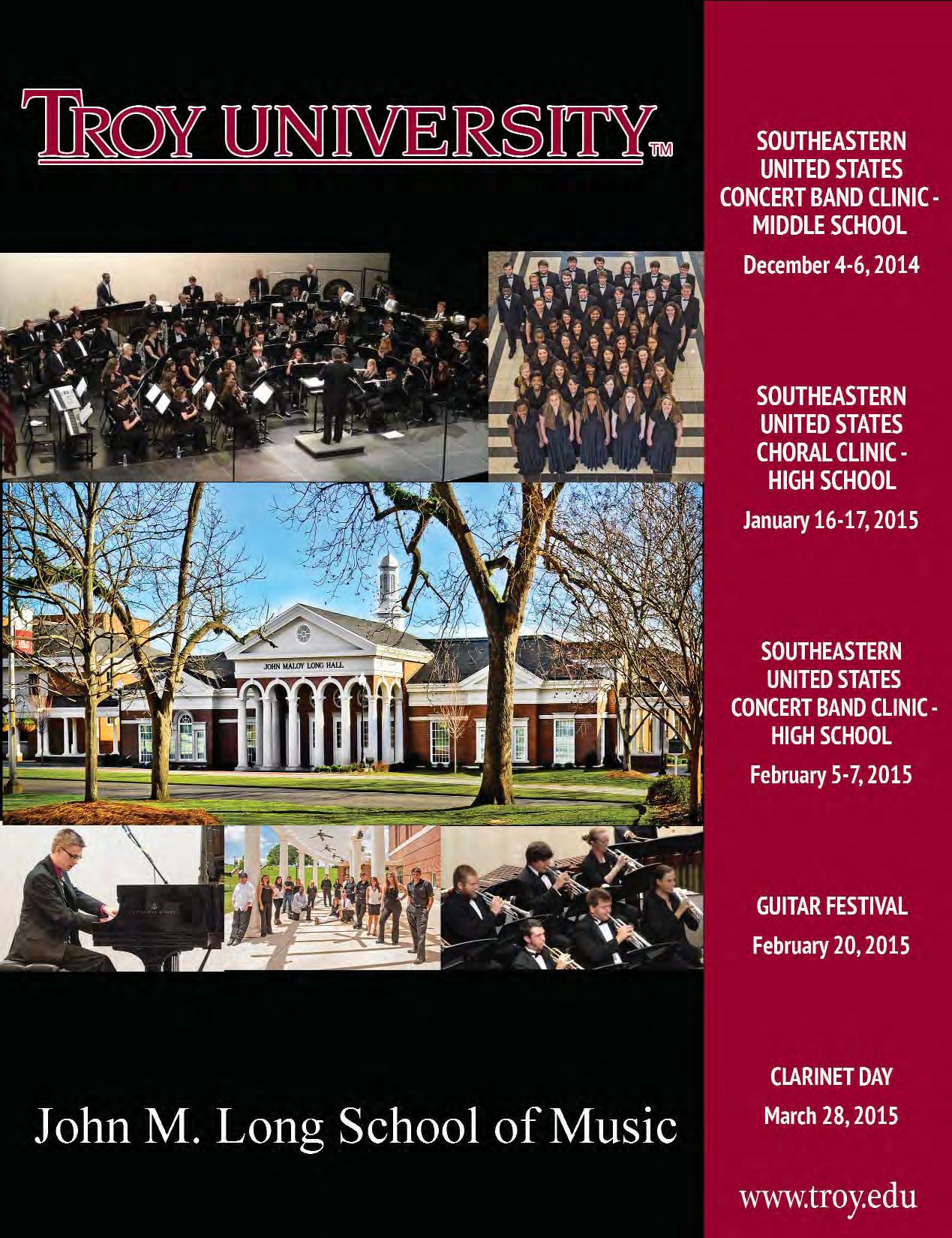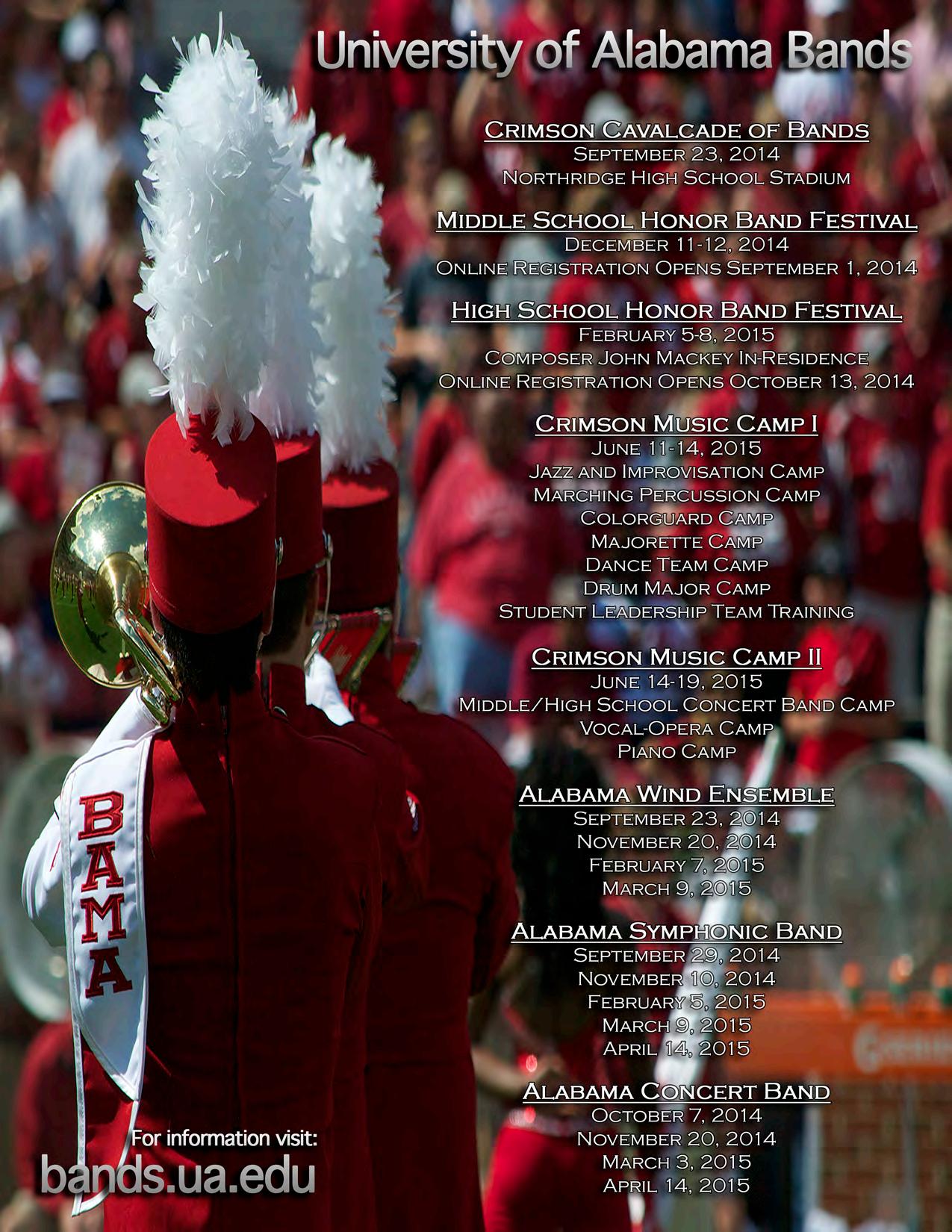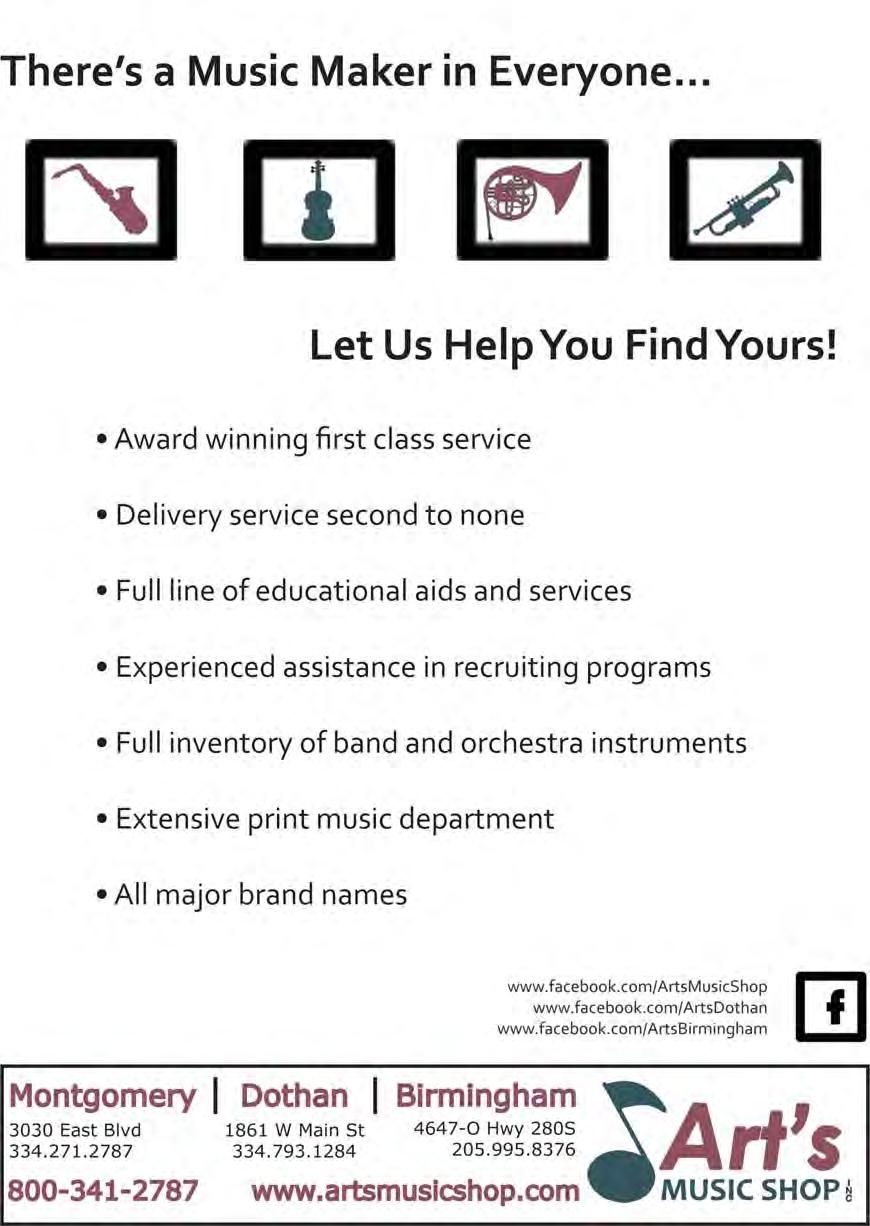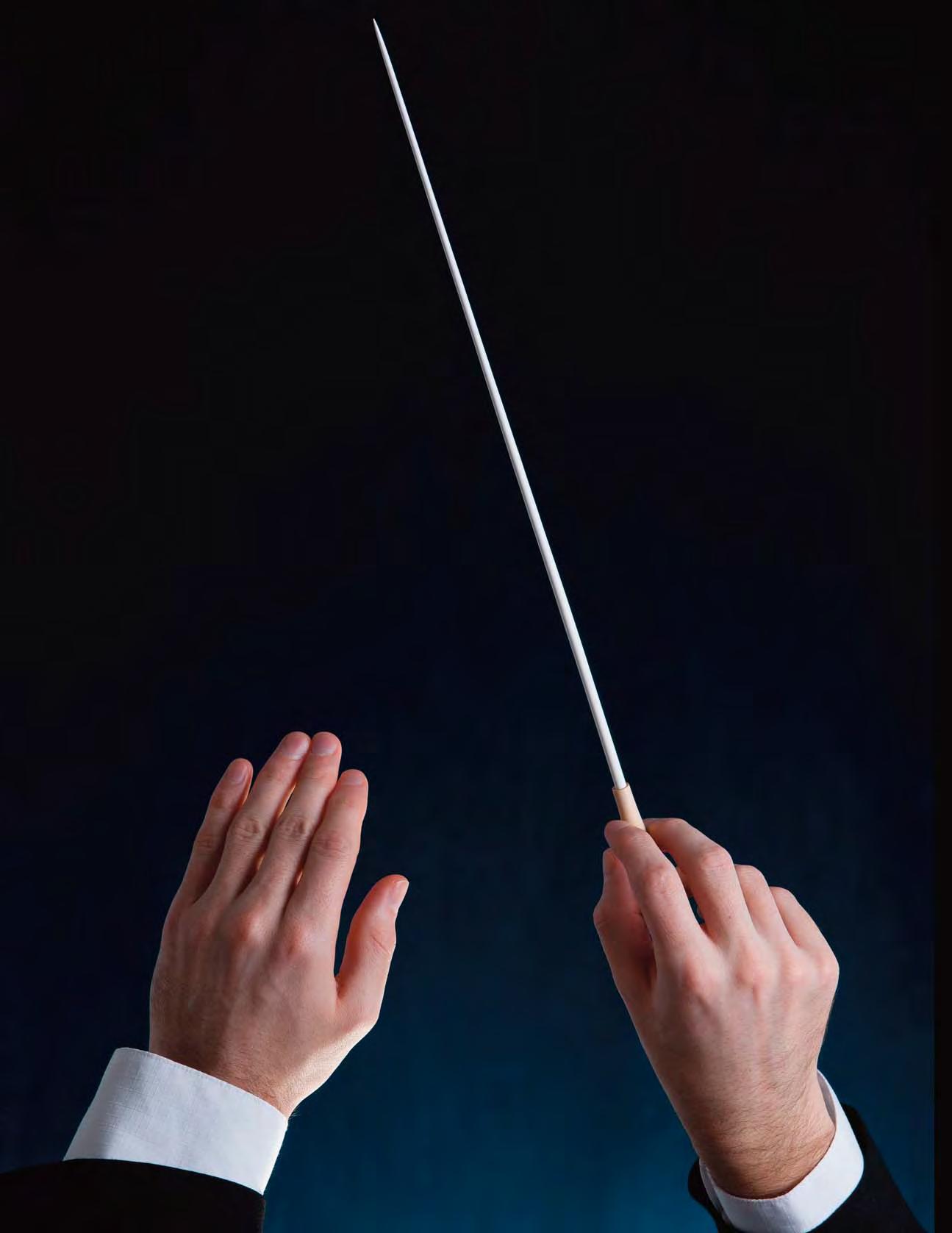
Piano and Voice Brass, Percussion, Strings, and Woodwinds

















































Piano and Voice Brass, Percussion, Strings, and Woodwinds















































14AVA All-State Clinicians
15AVA All-State Schedule
18ABA All-State Clinicians
19 ABA All-State Schedule
20Schedule of Events
22Conference Photos
24Honors and Awards
26Awareness of Aesthetic Distance...by Timothy Oliver
33Phi Beta Mu Tips That Click
34Choral Priorities: What Really Matters by Judy Bowers
37Movement:A Means to Music Learning by Carlos Abril
40The Path to Mastery by Colin Hill
42Creating a Culture of Inclusion by Ellary Draper
44You Are What You Eat: Repertoire... by David Ragsdale
46Research Evangelism by Mark Montemayor
52Choral Reviews by Erin Colwitz
54Preparing Students for the Collegiate Music Environment by Amir Zaheri
Honor
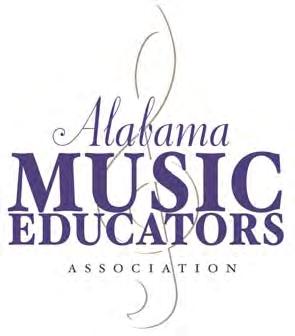
President Carl Hancock University of Alabama Box 870366 Tuscaloosa, AL 35487 (205) 348-6335 chancock@bama.ua.edu
President, ABA Rusty SmithsCourson Station High School P.O. Box 253 Smiths Station, AL 36877 (334) 664-4435 courson.rusty@lee.k12.al.us











Past President Sara GreystoneWomackElementary School 300 Village Birmingham,Street AL 35242 (205) 439-3200 saratwomack@gmail.com

President-Elect Susan Smith Saint James School 6010 Vaughn Road Montgomery, AL 36116 ssmith@stjweb.org
Executive Director Editor, Ala Breve Garry Taylor 1600 Manor Dr. NE Cullman, AL 35055 (256) 636-2754


amea@bellsouth.net
President, AOA Sarah Schrader 320 Lee Rd. 23 Auburn, AL 36830 (334) 728-2855 burkart_sarah@yahoo.com

Treasurer/RegistrarPat POAMEAStegallRegistration Box 3385 Muscle Shoals, AL pstegall@mscs.k12.al.us35661
President, AVA

Carl Davis Decatur High School 1011 Prospect Drive Decatur, AL 35601 (256) 559-0407
carlbethemeryellen@gmail.com









Industry Representative Becky Lightfoot Arts Music Shop 3030 East Blvd. Montgomery, AL 36116 334/271-2787

beckyl@artsmusicshop.com
Garry Taylor, Editor & Advertising Manager 1600 Manor Dr. NE Cullman, AL 35055 (256) 636-2754


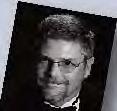


amea@bellsouth.net
AMEA Collegiate Advisor Ted UnivesityHoffman of Montevallo Station 6670 Davis Music Building 308 Montevallo, AL 35115 (205) 665-6668
ehoffman@montevallo.edu
President, Higher Education James Zingara UAB 231 Hulsey Center Birmingham, AL 35294 (205) 934-7376 jzingara@uab.edu
ADVERTISING & COPY DEADLINES













Fall - August/September (Back to School) issue: July 15 Winter - October/November (Conference) issue: September 15
Spring - February/March (All-State) issue: January 15 Summer - May/June (Digital Only) issue: April 15
Recording Secretary Carla Gallahan 212 Smith Hall, Troy University Troy, AL 36082 (334) 670-3502 School cgallahan@troy.edu






President, AMEA Collegiate Stacy UniversityDaniels of Montevallo (205) 215-8768
sdaniel4@forum.montevallo.edu
President, Elem/Gen Karla Hodges Rock Quarry Elementary 2000 Rock Quarry Dr. Tuscaloosa, AL 35406 (205) 759-8347
karlahodges@gmail.com
Unless otherwise indicated, permission is granted to NAfME members to reprint articles for educational purposes. Opinions expressed in this publication are not necessarily those of AMEA or the Editor. All announcements & submissions are subject to editorial judgement/revision.The Alabama Music Educators Association is a state unit of NAfME: The National Association for Music Education, a voluntary, nonprofit organization representing all phases of music education in schools, colleges, universities, and teacher-education institutions. Active NAfME/AMEA membership is open to all persons engaged in music teaching or other music education work.
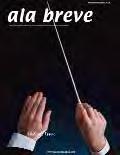
Improved designs have taken the legendary Yamaha concert drum sound to a new level. The new 9000 Professional Series Concert Bass Drum produces a deep, rich sound with exceptional projection due to its 7-ply maple shell with a darkwood stain finish. The addition of steel hoops creates precise and stable tuning to ensure a perfect sound that lasts.
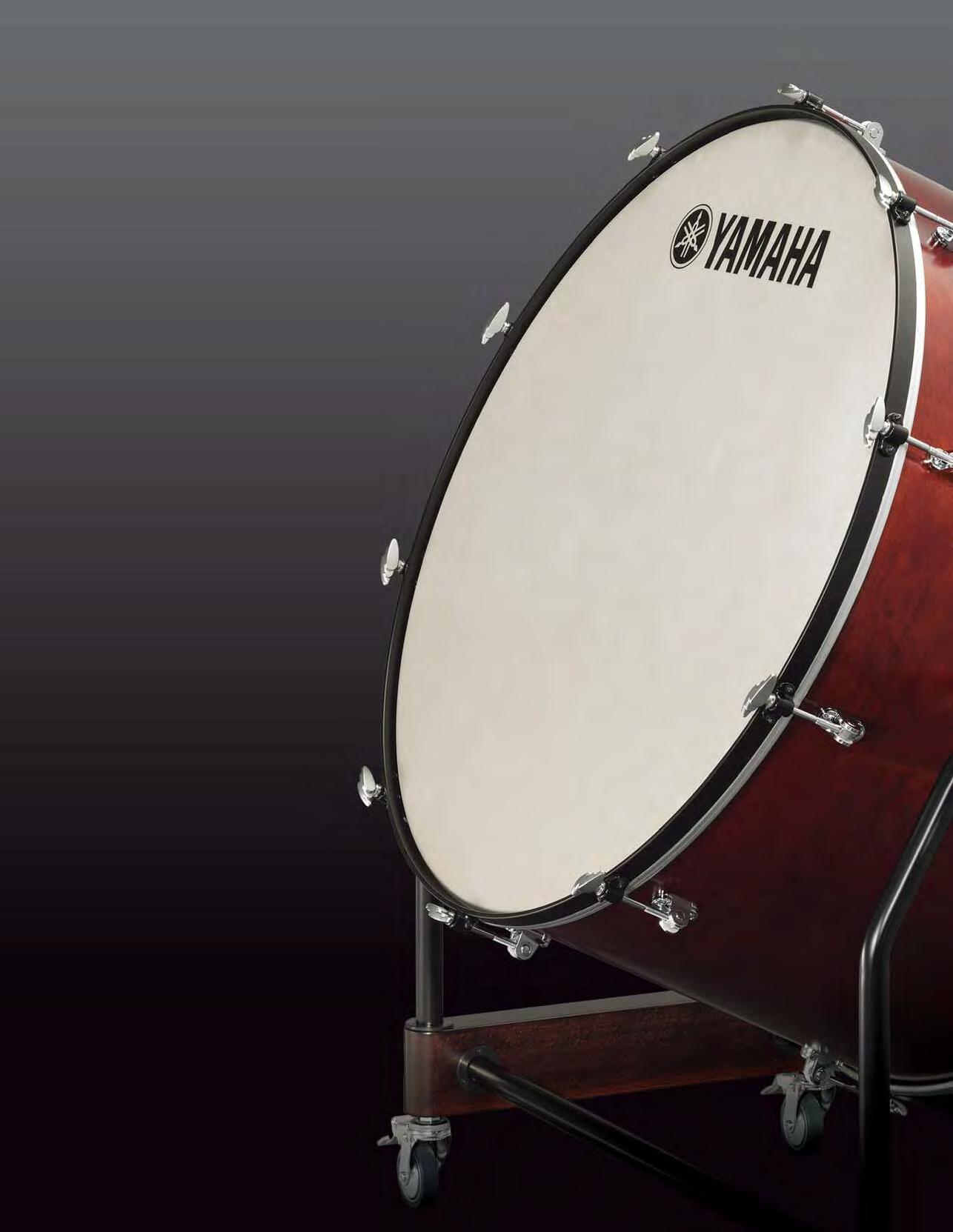
An anti-rotational slip measure on the stand, new noise control features on lug casings and tension rods, and a maple shell truly make this concert bass drum an instrument that will be the only choice for the most advanced of professional percussionists.
9000 Professional Series Concert Bass Drums

I am deeply honored to have an opportunity to share my thoughts with you. I know this is a standard statement for persons in leadership, but for me it has the added virtue of being true. We are coming off of a well-executed conference to the credit of our division officers, clinicians, conductors, and the organizational brilliance of our executive director, Garry Taylor, and while the conference was far from perfect, we can take comfort in knowing that many of the initiatives we implemented this year were well-received (See August 2014 or February/March 2015 President’s column). This was by all measures a successful conference.
First, it was one of the largest events we have hosted since 1973. Conference records were surpassed for the number of conference registrations, exhibitor booths, college attendees, FAME participants, clinic sessions, and even the number of research posters presented. To my surprise, the conference was attended by 67% of the entire association! To place this in perspective, I looked at the conference attendance reported in 2010, just prior to our move to Montgomery, and learned attendance is up by over 20% with this year being the largest since our move! This is an impressive amount of growth for a state conference, and we need to share this with potential exhibitors, clinicians, and the ALDE. Thank you for attending the conference and investing in your professional growth as a music educator.
Second, the feedback we received indicates most of our members were very pleased with the conference and the clinics. Seventy-two percent of attendees rated the conference as Excellent or Very Good (Excellent – 39%, Very Good –33%, Good – 19%, Fair – 9%, Poor – 0%) and another seventy percent rated the clinics as Excellent or Very Good (Excellent – 34%, Very Good – 36%, Good – 18%, Average – 9%, and Poor –
3%). Although these assessments are encouraging, we will endeavor to improve our conference because your time is valuable, and our mission to help the students of Alabama is too important. By the way, I want to thank those of you who freely gave your feedback online and in person to any member of the AMEA Governing Board. We deeply appreciate your compliments, suggestions, and candid conversations.
And third, any successful conference generates a multitude of interesting ideas and suggestions. One idea is the desire of AMEA members to hear from successful new and veteran teachers. As many of you know, I recently went through all of the conference programs from 1984 to 2014 and carefully looked at the names of the session presenters. I was surprised by the list of accomplished teachers in our state who have never presented at our conference before. I want to encourage you to find persons you would like to present and convince them to submit a session proposal for the 2016 In-Service Conference. If you do not feel ready to present a full-session or if you think someone has a great idea they need to share, then you might be interested in submitting a proposal to present in our first ever Lightning Round Session. The Lightning Round Session will consists of six to ten speakers who will each present one great idea in under six minutes. The goal is to provide information quickly and efficiently. If you’ve ever watched a TED Talk online, then you will have the general idea. If you’ve never presented before at AMEA, this is a great way to get your feet wet.
On behalf of the AMEA, I’d like to extend my sincerest congratulations to the performing groups and presenters on a job well done. In addition, I’d like to thank everyone who presided over sessions and provided assistance throughout the conference. Leadership comes in many forms. Thank you for modeling selfless service to our profession and for preparing
sessions and concerts for us to learn from and enjoy.
Finally, it has been said by many of our past-presidents that the success of the AMEA In-Service Conference lies in the hard work put in by the members of the Governing Board and the leaders of our various divisions. The AMEA is most fortunate to have the leadership of these fine music educators.
Garry Taylor, Executive Director
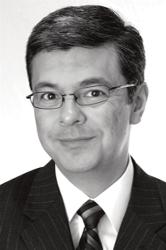
Susan Smith, AMEA President-Elect
Sara Womack, AMEA Immediate Past President
Pat Stegall, Treasurer/Registrar
Carla Gallahan, Recording Secretary
Rusty Courson, Alabama Bandmasters Association President
Sarah Schrader, Alabama Orchestra Association President
Carl Davis, Alabama Vocal Association President
Karla Hodges, Elementary/General Division President
James Zingara, Higher Education Division President
Edward Hoffman, Collegiate Advisor
Stacy Daniels, Collegiate President
Becky Lightfoot, Industry Membership Representative
Three of our governing board members are serving their final semester with us and I’d like to thank them for their service. Thank you to Karla Hodges, Rusty Courson, and Stacy Daniels. Good luck to all of you on your future endeavors.
I wish everyone good luck as you prepare for spring concerts, festivals, assessments, and all-state events. If there is anything we can do to help you, please feel free to contact me directly. I would love to hear your ideas and answer any questions you might have about the future of our association.
 Carl
Carl
Carl Hancock AMEA President
Unorthodox. Unexpected. Unusual. Rather than follow the path of least resistance, creativity is about asking, questioning and discovering new paths to insight. It thrives in an environment that encourages individuality over conformity, and self-discovery through community. Discover unconventional wisdom at the University of Montevallo Department of Music, an All-Steinway School offering Bachelor of Music degrees in Music Education & Performance and the Bachelor of Arts degree in Music.
SCHOLARHIP AUDITION DATES:




2.7.152.28.153.14.15







To schedule an audition, complete the online form found at: www.montevallo.edu/music/auditions

To schedule a visit or for more information contact: 205-665-6670 or music@montevallo.edu
www.montevallo.edu/music

I hope this message finds you well and feeling refreshed after attending the 2015 AMEA Conference in January. We had three very busy days of professional development and fun and I hope that you were able to walk away with a few new ideas that you can implement into your classroom. Thank you for the feedback many of you have provided after attending the conference. It is always helpful to hear your ideas as we begin to plan for future conferences. If you were not able to attend this year I hope that you will be able to join us next year.
I would like to take this opportunity to say thank you to all of you. Thank you for trusting me to lead our division and for the continuous support and encouragement you have shown me over the past two years. It has been an honor to serve as your President. I will always look back on this time with gratitude because this opportunity challenged me to grow professionally and allowed me the opportunity to meet many new faces. I am excited to pass
1946Yale H. Ellis
the responsibility over to the new board. I know that their leadership will continue to guide us on the path of excellence. The Executive Officers for 2015-2017 are: Cliff Huckabee, President; Phil Wilson, President-elect; Karla Hodges, Past President; Lori Zachary, Treasurer; Melissa Thomason, Secretary; Kristi Howze, Hospitality. I would like to say a special thank you to our outgoing Past President, Dr. Beth Davis. Thank you for giving to our division for the past six years. It is a huge commitment and I thank you for leading, guiding, and directing us with your wisdom.
I wish you all a fantastic Spring Semester! Be on the lookout for information pertaining to the 2015 AMEA Elementary Music Festival. We will be sending out information via email by the end of February. I hope that you will consider participating in this wonderful event that will leave a wonderful lasting impression on your students and their families!
Upcoming Dates:
March 7, 2015 AOSA Spring Workshop Vestavia Hills Elementary East, Rene Boyer
April 24-25, 2015 ACDA Young Voices Festival University of Alabama Tuscaloosa, AL

2015 AMEA Elementary Music Festival/ Fall Workshop: Information coming soon!!
January 21-23, 2016 AMEA In-Service Conference; Montgomery, AL
1970Jerry Bobo
1992Dianne Johnson
1948Walter A. Mason
1950Vernon Skoog
1952John J. Hoover
1954Lamar Triplett
1956Carleton K. Butler
1958Mort Glosser
1960Wilbur Hinton
1962Lacey Powell, Jr.
1964G. Truman Welch
1966Jerry Countryman
1968Floyd C. McClure
1972Frances P. Moss
1974George Hammett
1975Frances P. Moss
1976S. J. Allen
1978W. Frank McArthur, Jr.
1980Paul Hall
1982Lacey Powell, Jr.
1984Johnny Jacobs
1986Merilyn Jones
1988Ronald D. Hooten
1990Ken Williams
1994James K. Simpson
1996Johnnie Vinson
1998Michael Meeks
2000John McAphee, Jr.
2002Tony Pike
2004Becky Rodgers
2006John Baker
2008Pat Stegall
2010Steve McLendon
2012Sara Womack
2014Carl Hancock
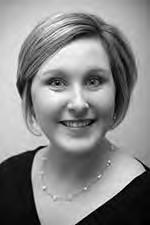




Like me, I hope that you greatly enjoyed your time at the 2015 AMEA Conference and came back to your jobs reinvigorated and ready to take on the many challenges that face us every day. It is a time to connect with colleagues and former students; to share information and to garner new ideas for the future. The goal of this year’s conference was to bolster membership participation, and in this, I believe that we have had success. The HED luncheon attracted 19 colleagues from 10 institutions from around the state; the new student recital
brought together 60 student performers from 5 different universities who performed to over 100 people. We also brought new ideas to the table to help establish a unique HED footprint in the future. The luncheon discussion launched the Community College Initiative as well as possible future projects such as a solo competition and a call for scores/faculty recital. The View from the Chair panel discussion brought four accomplished chairs and covered topics concerning tenure, promotion, leadership, collegiality and entrepreneurship.
The HED conference sessions were eclectic, addressing topics in percussion, practicing, choral music, teacher education and conducting. I would like to thank Luis Rivera (USA), Matt Greenwood (USA), Danielle Todd (UA), Melinda Doyle (Montevallo), Brian Kittredge (UAB), Sue Samuels (UAB), and special guest lecturer Robert Duke (University of Texas) for
sharing their expertise through their session presentations.
There are many more to thank for the success of this conference. I first would like to thank Mildred Lanier (HED SecretaryTreasurer) and Lori Ardovino for serving as presiders. Our first-ever panel discussion was a great success due to contributions of participating departmental chairs Dr. Sara Lyn Baird (Auburn), Dr. Kathryn Fouse (Samford), Dr. Alan Goldspiel (Montevallo), and Skip Snead (Alabama).None of the above would be possible without the expert guidance and leadership of the AMEA Executive Director, Garry Taylor.
Thanks again for all your contributions and hard work. I wish all of you a successful and enjoyable Spring semester and will look forward to working with you as we head towards the 2016 AMEA Conference.
Thank you to all our presenters at this year’s AMEA conference. You made this year’s conference fantastic! The string presentations were especially interesting, motivating, and rejuvenating. We enjoyed sessions in the areas of ensemble listening, classroom technology, fiddling techniques, bass techniques, and shifting. We were lucky to have some of our own state colleagues present this year. Thank you Dr. Anne Witt, Dr. Daniel Stevens, and Dr. David Ballam for your wonderful sessions. To round out our sessions a performance by the Rock Quarry Middle School Orchestra from Tuscaloosa added the perfect finishing touches. The AMEA conference is such a great refresher each year. It always gives me the energy to finish out the school year with enthusiasm. If you missed it this year, I hope you will make time in your busy
schedules to attend next year’s conference in January.
Our next AOA event is All State Orchestra will be underway or completed when this issue is published. Thank you to all the conductors, judges, sectional coaches, and teachers for taking the time to work with Alabama’s talented young musicians. This weekend is an amazing experience for all who attend. I appreciate your sharing of your time and talents with them to make this weekend amazing. Thank you to the University of Alabama for hosting us again this year. It is a blessing to have this venue to hold the festival.




I am very proud of all the students who auditioned and made All State Orchestra this year. The competition was very high this year and you should be very proud of your achievements. For those who didn’t make it to the festival this year, I hope you will audition again next year. I remember years ago when I was in your shoes auditioning and attending All State. That
weekend was one of the highlights of my year. It was always great to get together with players from all around the state under the direction of a top notch conductor. If your students haven’t experienced this yet, consider encouraging them to participate in the future.
I would like to thank the AOA Executive Board and district chairs, Sam Nordlund, Felicia Sarubin, Daniel Jamieson, Julie Hornstein, Jacob Frank, Matthew Grant, Elisabeta Warden, Eugene Conner, ChinMei Li, and Roland Lister for your help this year with all events. These events would not be possible without all your hard work. Thank you for all you do!
In closing, I pray that you can continue to keep your enthusiasm high throughout the end of the school year. Set your goals for your students and stick to them. I look forward to hearing your success stories from this year!


We just enjoyed a superb winter conference reconnecting with each other, sharing information, attending sessions and concerts. We certainly appreciated the sessions by our own presenters. However, Dr. Tucker Biddlecombe was a welcomed newcomer, and I hope that we see more of him in our future—either at an all-state festival or honor choir. Even though his reading session addressed contentmainly for high school level, he provided such variety within the literature. There was nothing substandard and a majority of the literature is accessible by all. I encourage you to contact Margaret or Tom at Beethoven and Company the next time that you need any literature. They provided his packet of music at no cost to AVA. After discussing with Dr. Biddlecombe the content of his sessions planned for the conference, I attempted to choose other sessions, from the session proposals which would complement his topics. We were afforded sessions targeting functional aspects of the choral rehearsal— vocal health, theory, rehearsal pacing, sightreading and language we use in the rehearsal. My hopes were that your students rehearsing this spring semester would directly benefit from your attendance. Paul Gulsvig and Jarrod Voss engaged our All-State Show Choir students in quality rehearsal and performance.
I congratulate the finer performances by the ensembles that presented concerts. I want to encourage you to submit for a performance. To this end, plans are underway to move our performances to another location in the civic center that is acoustically more beneficial for choral singing than is the performing arts auditorium. We will have more to say about this at the All-State Festival in April, but certainly consider recording your SCPA selections and submitting for a concert performance.
Being chosen for All-State Chorus is one of the highest honors a choral student in the state can receive. We auditioned approximately 3,000 students in November with approximately one-third of those being chosen for one of our five all-state

ensembles. Those students will interact with some of our finest vocal conductors. Read the information concerning our guest conductors in the following pages.
Be aware that the all-state schedule this year is quite different. I presented some of the more striking differences from past schedules at the winter conference. We are no longer on one campus. Our students will be split between Samford and First Baptist Church. Although the facilities are close in proximity, pre-arrival planning of the logistics is necessary. Pay special attention that the high school SATB ensemble is the only ensemble that is allowed to eat on the Samford Campus. Their rehearsal is planned around them utilizing the cafeteria for lunch. All other ensembles must transport off-site to eat. Please honor this request. Note that the high school SSA/TTBB ensembles and the middle school Mixed/Treble ensembles swap locations from Samford to First Baptist Church. Be expecting your all-state information to be available on the AVA website from our president-elect Ginny Coleman one month prior to the festival.
I’ve asked our district chairman to update their web pages on the AVA website. You should expect all communications for all AVA events to be disseminated via our website. If you are attending an SCPA in another district you should be able to get all information concerning the event you are attending from that district’s web page. Let your district chairman know if you have difficulty accessing the information.



Lastly, we need to consider the philosophical reasoning of the opportunities we provide our members. First, we currently have our State Outstanding Choral Students perform a solo on the all-state concert. Does this practice duly honor these students? I encourage you to peruse the rubric our adjudicators use to select the winners. Does a solo performance accurately reflect and demonstrate the substance of the award? Is there a more fitting way in which to recognize an outstanding choral student, rather than have them perform a solo?
Secondly, the All-State Show Choir performs at the beginning of the convocation at the All-State Festival. Financially, this costs our organization in excess of a thousand dollars. It is completely un-funded. If we chose to continue this practice, then we must discover and/or develop a revenue stream to render it cost neutral. Is this a practice that you consider so important that we discover a method to have it pay for itself? If it is beneficial, then what are the benefits? Is the gain worth the unfunded cost? These are two discussion topics for our summer board meeting. We asked you to provide thoughtful written communication to your district chairman as early as fall workshop and we asked again for this at the winter conference. We have received several pages of dialog. Please continue to provide us with your opinion. At the summer board meeting we will attempt to make decisions based on what is going to be best for our students. Please communicate with your district chairman.
See you at Samford.





Beth Holmes currently conducts the Millikin Women, a choir comprised of 60 freshmen singers, and serves on the Millikin voice faculty. Under her direction the choir hosts an annual Women’s Choral Festival on campus, takes an Illinois tour, and performs for the popular Millikin Christmas Vespers and other annual concerts. Beth is an active guest conductor, directing District and AllState festival choirs and Convention Honor Choirs throughout the Midwest. Recent appearances include Women’s Honor Choirs on the 2010 Regional ACDA convention in Minneapolis, as well as state ACDA conventions in Illinois, Florida, and Minnesota. A graduate of Kansas State University, Beth subsequently completed a Masters in Choral Conducting at Arizona State University. She served as the Artistic and Musical Director of the Millikin University Children & Youth Choir Program for 7 years, conducting its premiere ensemble and coordinating a staff of conductors, managers, and Millikin student interns. She has served as ACDA Repertoire and Standards Chair for Women’s Choir in both Iowa and Illinois, and maintains a private voice studio in her home.
University of New York, where she directs the Queens College Women’s Choir and provides instruction in choral methods and conducting. Dr. Babb also coordinates the choral ensembles of the Lawrence Eisman Center for Preparatory Studies in music at Queens College, and she is the Artistic Director of the Queens Youth Choir. She earned the B.M.E., M.M.E., and Ph.D. from Florida State University in Tallahassee, FL. Her research interests include vocal tone development, critical thinking in music education, and English language learners in the music classroom. She is an active conductor and clinician, conducting honor choirs throughout the United States, as well as presenting at state, regional and national conferences of the American Choral Directors Association and the National Association for Music Education. Dr. Babb is an active member of ACDA, NAfME, NYSSMA and CMS.
Dr. Christopher Aspaas, Associate Professor of Choral/Vocal Music at St. Olaf College, received his Ph.D. in Choral Music Education at The Florida State University in Tallahassee, his M.M. in Choral Conducting from Michigan State University in East Lansing, his B.M. in Voice Performance from St. Olaf. Christopher has served on the faculties of Central Washington University in Ellensburg, Washington and Mount Holyoke College in South Hadley, Massachusetts. At St. Olaf, Aspaas conducts the Viking Chorus, a 90-voice ensemble of first-year student men, and also leads the Saint Olaf Chapel Choir, a 100-voice ensemble specializing in the performance of oratorio and larger multi-movement works. In recent years, Christopher has conducted performances of Brahms’ Ein Deutsches Requiem, Mendelssohn’s Elijah, and most recently, Benjamin Britten’s War Requiem, which was chosen for broadcast on Minnesota Public Radio.

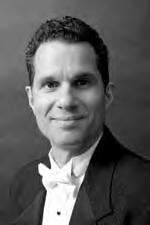 Sandra Babb
Sandra Babb
Dr. Mark W. Bartel, associate professor of music and director of choral music, has been with Friends University since 2005. Dr. Bartel conducts the Singing Quakers, Madrigal Choir, Women’s Chorus and Choral Union. He also teaches in the areas of applied voice and conducting. He has held positions at Hobart and William Smith Colleges (N.Y.), University of Western Ontario and Canadian Mennonite University. His choirs have performed at Kansas Music Educators and regional American Choral Directors Association conventions and toured the United States, Canada and Germany. He also serves as the artistic director of the Wichita Chamber Chorale.
Lynne Gackle currently is Professor of Ensembles and Associate Director of Choral Activities at Baylor University (Waco, TX) where she conducts the Baylor Bella Voce (Select Women’s Ensemble) and the Baylor Concert Choir. Lynne is an active clinician, conductor and adjudicator for choral clinics,
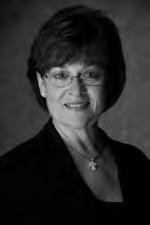

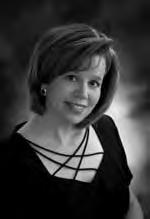 Beth Holmes MS Treble
MS Mixed
Sandra Babb is Assistant Professor of Music Education at Queens College, City
Mark Bartel HS TTBB
Chris Aspaas HS SSA
Lynne Gackle HS SATB
Beth Holmes MS Treble
MS Mixed
Sandra Babb is Assistant Professor of Music Education at Queens College, City
Mark Bartel HS TTBB
Chris Aspaas HS SSA
Lynne Gackle HS SATB
honor choirs, workshops and festivals throughout the United States and abroad. Gackle has conducted All-State choirs in 30 states, several divisional ACDA honor choirs and two ACDA national honor choirs. Her choirs performed at American Choral Directors Association state, division, and national conferences and the Music Educators National Conference Biennial Convention. Internationally, she conducted the Australian National Choral Association’s
High School Women’s Choir in Brisbane, the Alberta Choral Federation’s High School Honour Choir in Calgary, the DoDDSEurope Honors Music Festival Mixed Choir, (Wiesbaden, Germany), the Haydn Youth Festival in Vienna, and the Association for Music in International Schools (AMIS) International Women’s Honor Choir in Beijing, China. Lynne has served as president of ACDA-Florida and the ACDA’s Southern Division. The Florida ACDA
Wednesday–April 8, 2015
11:00 a.m.Board Meeting, Wright Center Basement
2:45 p.m.Female OCS Competition - Brock Recital Hall
4:30 p.m.OCS/OA – Picture - Brock Recital Hall
5:00 p.m.Male OCS Competition - Brock Recital Hall
OA Competition
Thursday–April 9, 2015
8:00 – 11:30 a.m.All-State Show Choir Rehearsal
Wright Performance Center Stage
10:00 a.m.–1:00 p.m.Registration - Wright Basement
1:00 - 1:45 p.m.General Assembly - Wright Performance Center
ASSC Performance
High School All-State Rehearsals – SAMFORD UNIVERSITY
2:00 – 6:00 p.m.HS SATB Wright Performance Center
HS SSA Brock Recital Hall
HS TTBB Cassessee Band Hall
6:00 – 8:00 p.m.High School Dinner Break
8:00 - 10:00 p.m.High School All-State Rehearsals
Same sites as first rehearsal
11:00 p.m. Curfew
Middle School All-State Rehearsals – FIRST BAPTIST CHURCH
2:30 – 5:30 p.m.MS Mixed FBC Sanctuary
MS Treble FBCBasement
5: 30 – 7:30 p.m.Middle School Dinner Break
7:30 – 9:30 p.m.Middle School All-State Rehearsals — FBC 11:00 p.m. Curfew
Friday–April 10, 2015
Morning Rehearsals
HS Rehearsals @ Samford
MS Rehearsals @ First Baptist Church
MS Mixed FBC Sanctuary
MS Treble FBC Basement
8:30 – 11:00 a.m.Rehearsal
11:00 – 1:30 p.m.Lunch
HS SATB
8:30 – 11:00 a.m. Brock Recital Hall
11:30 – 1:00 p.m. Wright Performance Center
1:00 - 2:30 p.m.Lunch on campus
2:30 – 4:30 p.m. Brock Recital Hall
chapter awarded her the Wayne Hugoboom Distinguished Service Award for dedicated service, leadership, and excellence. Dr. Gackle was also awarded Baylor’s Outstanding Faculty Award in Research in 2012.Lynne received her BME from Louisiana State University and her MM and Ph.D. from the University of Miami in Coral Gables, Florida.
HS SSA 8:30 - 10:00 a.m. Wright Performance Center
– 11:30a.m. Cassessee Band Hall 11:30 – 2:00p.m.Lunch(not on campus)
– 5:00 p.m. First Baptist Church Sanctuary
HS TTBB
8:30 – 9:45a.m. Cassessee Band Hall
10:00 – 11:30a.m. Wright Performance Center
11:30 – 2:00p.m.Lunch(not on campus)
2:00 - 5:00 p.m. First Baptist Church Basement
Afternoon Rehearsals
HS SSA & TTBB Rehearsals @ FBC
MS Mixed & Treble; HS SATB Rehearsals @ Samford MS Mixed
Saturday-April 11, 2015
11:30a.m.Call Time-HS Concert - Wright Performance Center (Performers Seated)
OCS/OA./ME District Winners(Assigned seats in front of auditorium)
photo



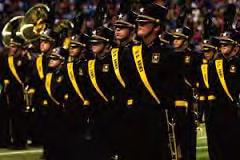

Congratulations to Morgan Sweatman, a clarinet player from KDS DAR High School, on being selected to participate in the U.S. Army All-American Marching Band. Morgan received an all-expense paid trip to San Antonio for the All-American Bowl, including airfare, hotel, food, rehearsal gear, performance gear, instrument (borrowed), and more. Morgan was nominated by DAR band director, Jody Stiles.
with the quality of all this year's applicants. This was our most competitive year, and it was difficult to narrow the field,” says Associate Artistic Director Marcus Roberts. “Leading Swing Central Jazz is a highlight for me every year. Our group approach to instruction immerses students in big band jazz, and after three intense days, students, band directors and clinicians walk away inspired by this great art form.”
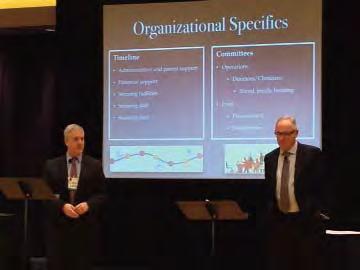
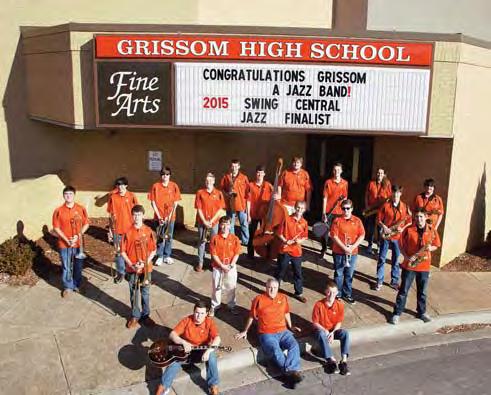
Selected as one of twelve high school Jazz Bands to Participate in the 2015 Savannah Music Festival
Savannah, Georgia – Twelve of the nation’s top high school jazz bands have been selected to participate in the ninth annual SWING CENTRAL JAZZ High School Jazz Band Competition & Workshop, an event produced by the Savannah Music Festival (SMF). Pianist/composer Marcus Roberts leads a group of 23 esteemed musicians/ educators as the Associate Artistic Director, along with Associate Director Jim Ketch, trumpet player and Director of Jazz Studies at UNC Chapel Hill. Participating students work with jazz masters across three days, perform in the “Jazz on the River” showcase on Savannah’s River Street, play in competition rounds, and attend a variety of SMF performances during their stay, which takes place from March 25 through 27, 2015. “We were thrilled
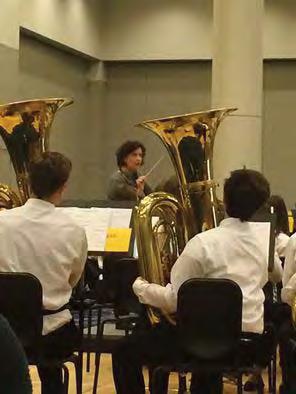 Grissom High School A Jazz Band
Theo Vernon and Bill Connell of Grissom High School presents Concert Band Camp? It’s the Residuals!! occuring during “The Midwest Clinic” in December.
Grissom High School A Jazz Band
Theo Vernon and Bill Connell of Grissom High School presents Concert Band Camp? It’s the Residuals!! occuring during “The Midwest Clinic” in December.

As I write this, I’m still recovering (and reflecting) on our AMEA In-Service Conference this year. It is SO refreshing to be able to experience professional development that is actually applicable to our field!!! I’m sure that we’ve all experienced PD sessions at our school that have absolutely NOTHING to do with music education. Thank you so much to those of you that took the time to share your ideas with us in a clinic setting.
We were also very blessed to have GREAT concerts this year!!! A very special thanks to the Faith Academy Symphonic Band (David Pryor), the Tuscaloosa County High School Wind Ensemble (Jed Smart), the Sparkman High School Wind Ensemble (David Raney), the Shades Valley High School Symphonic Band (David Allinder), the Monrovia Middle School Advanced Band (Donald Dowdy), and the Alabama Winds (Randall Coleman). I would be remiss in not mentioning the Intercollegiate Band performance as well, conducted by
one of the greats in our field, Col. John Bourgeois.
If you submitted a proposal for a clinic or applied for a performance slot, and you weren’t selected this year, please consider reapplying for 2016. We have a limited number of slots for clinics and performances, and both of the years that I’ve been President, we’ve had some very tough choices to make. Application forms can be found on the AMEA website, and the deadline for submitting applications to Garry Taylor is June 1st
After spending the last two years in Huntsville, we will be traveling back to Mobile this year for our All-State Band Festival. On Wednesday, April 11th, our state solo contest will take place on the campus of the University of South Alabama, and we will be at the Mobile Convention Center on Thursday, April 12th and Friday, April 13th. The dress rehearsal and final concert will take place at the Mobile Civic Center on Saturday, April
14th. Clinicians this year are Robert W. Smith, Red Band; Richard Saucedo, White Band; Dr. Ken Bodiford, Blue Band; and Dr. Carla Gallahan, Middle School Band.
Our summer convention will be held at the Hampton Inn and Suites in Orange Beach again this year. The ABA Board and Music Selection Committee will meet on Tuesday, June 23rd, while we’ll have ABA general business meetings and clinics on Wednesday, June 24th and Thursday, June 25th. If you have any ideas for clinics, please contact our incoming President, Michael Holmes, at thetubaman@charter.net. As always, if you have questions or concerns, feel free to contact me at courson.rusty@lee.k12.al.us. I look forward to seeing all of you at all-state in Mobile this April!!!
Alabama Bandmasters Association , ABA Legislation 2015-3

CLASSIFICATION of BANDS for MPA:
1) Remove Article XVI Section 2.
Add:
Section 2. Classification of Bands
a. For the purposes of the ABA Music Performance Assessment, bands will be classified according to the following criteria:
Classifications:
AA bands will play a composition off of the AA ABA Cumulative List
A bands will play a composition off of the A ABA Cumulative List
BB bands will play a composition off of the BB ABA Cumulative List
B bands will play a composition off of the B ABA Cumulative List
CC bands will play a composition off of the CC ABA Cumulative List
C bands will play a composition off of the C ABA Cumulative List
D bands will play a composition off of the D ABA Cumulative List
Sight Reading:
Bands classified as AA will sight-read from the level VI sight-reading list
Bands classified as A will sight read from the level V sight-reading list
Bands classified as BB and B will sight-read from the level IV sight-reading list
Bands classified as CC and C will sight-read from the level III sight-reading list
Non-beginning bands classified as D will sight-read from the level II sight-reading list
Beginning bands (all students in their first and second year of band) classified as D will sight-read from the level I sight reading list
b. From the pieces chosen by the director for performance at Music Performance Assessment, ONE COMPOSITION must be from the approved Alabama Bandmasters Association (ABA) Cumulative Music List.
c. Bands will be classified by their chosen selection from the ABA Cumulative Music List and their corresponding sight-reading level.
d. NO STUDENT WILL BE ALLOWED TO PARTICIPATE IN MULTIPLE BANDS. If a director has a special need for a student playing in a second band, the director shall present the facts and circumstances prompting the request to the Board of Directors at the AMEA In-service Conference in January. The director will be notified immediately if possible, but within seven (7) days if further study is necessary. FOR ANY STUDENT TO QUALIFY IN ADDITIONAL BAND(S), HE OR SHE MUST PERFORM ON A DIFFERENT INSTRUMENT.


 Carla Gallahan
Carla Gallahan
Middle School Band
Dr. Carla Gallahan is an Associate Professor of Music Education and serves as the Assistant Director of the John M. Long School of Music at Troy University in Troy, Alabama. She received the Bachelor of Music Education Degree, Master of Education in Music, and the Doctor of Philosophy in Music Education from Auburn University. As a member of the faculty at Troy University, her responsibilities include teaching music education courses, instructing the horn studio, and serving as Coordinator for Undergraduate Music Education Internship. Dr. Gallahan is the Executive Director for the Southeastern United States Concert Band Clinic and Honor Bands held at Troy University. Her teaching background includes eighteen years experience in the Alabama public schools. Dr. Gallahan is the Recording Secretary for the Alabama Music Educators Association and former chairman of District VI of the Alabama Bandmasters Association. She was selected to Who’s Who Among America’s Teachers and Outstanding Young Women of America, has been chosen as Auburn Junior High School Teacher of the Year, Auburn City Schools Secondary Teacher of the Year, and has served as a clinician and adjudicator throughout the Southeast. Her professional affiliations include the National Association for Music Educators, Alabama Music Educators Association, Alabama Bandmasters Association, and Phi Beta Mu.
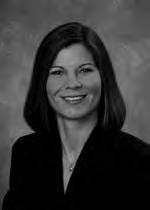
Dr. Kenneth G. Bodiford has served as the Director of Bands and Assistant Professor of Music at Jacksonville State University in Jacksonville, Alabama for the past twenty years. He earned his Bachelor of Science degree in Music Education at Jacksonville State University, his Master of Music in Music Education and Wind Ensemble Conducting degree at East Carolina
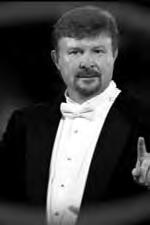
University and his Doctorate of Musical Arts in Instrumental Conducting degree from The University of Alabama. Dr. Bodiford is the conductor of the Jacksonville State University Chamber Winds, which is the top performing wind ensemble at the university. This ensemble has performed for regional and national venues such as the Alabama Music Educators Conference and the Bands of America Concert Festival Regionals. The ensemble also performs on campus and throughout the northeast Alabama and
Richard L. Saucedo White Band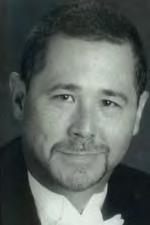
Georgia regions. Dr. Bodiford is also the director of the internationally known “Marching Southerners.” Under his leadership, The Marching Southerners have grown from approximately 144 members to a membership in excess of 450. They have been included in the Congressional Record of The 111th Congress U.S. House of Representatives for their production, “Of Thee I Sing,” performed in Gubernatorial, and Presidential inaugural parades as well as the Macy’s Thanksgiving Day Parade, and most recently, were chosen to lead the 2012 London New Year’s Day Parade. Dr. Bodiford also served as the Executive Director of the Spirit of Atlanta Drum and Bugle Corps (JSU Spirit) from 2001 until 2007. Under his leadership, the corps consistently ranked among the elite top twelve corps in the nation at the DCI World Championships. As well, he was appointed to the staff of the U.S. Army All American Marching Band that performs at the U.S Army All American Bowl. In addition to his Director of Bands responsibilities, Dr. Bodiford teaches the instrumental conducting courses at the university and maintains a busy national schedule as a clinician, adjudicator and guest conductor. Most recently, Dr. Bodiford was nominated for the 2013 Music Educator Award
Richard L. Saucedo is currently Director of Bands, Emeritus after retiring from the William H. Duke Center for the Performing Arts at Carmel High School in Carmel, Indiana. During his 31-year tenure, Carmel bands received numerous state and national honors in the areas of concert band, jazz band and marching band. The CHS Wind Symphony performed at the Bands of America National Concert Band Festival three times (1992, 1999, and 2004) and was named the Indiana State Champion Concert Band in 1999 and most recently in 2013. The group also performed at the Midwest Band and Orchestra Clinic in Chicago during December of 2005. The Carmel Jazz Ensembles have won numerous awards at jazz festivals in Indiana and throughout the Midwest. The Carmel Marching Greyhounds have finished in the top ten at the Bands of America Grand National Championship for the past 15 years and were named BOA National Champions in the fall of 2005 and again in 2012. The Marching Band has been an Indiana Class A State Champion four times in recent history. The Indiana Bandmasters Association named Mr. Saucedo Indiana’s “Bandmaster of the Year” for 1998-99. Mr. Saucedo was recently named the “Outstanding Music Educator” in the state of Indiana for 2010 by Mr. Saucedo travels throughout the country as an adjudicator, clinician and guest conductor for concert band, jazz band, marching band, and orchestra. He is currently music coordinator as well as the brass composer/arranger for the Blue Stars Drum and Bugle Corps in La Crosse, Wisconsin. Mr. Saucedo did his undergraduate work at Indiana University in Bloomington and finished his master’s degree at Butler University in Indianapolis. He is also an aviation enthusiast and a
certified private pilot. Mr. Saucedo is married to his wife Sarah and is most proud of his daughter Carmen, who is about to begin her teaching career after studying elementary education at Ball State University. His son, Ethan, is currently in 2nd grade and loves music and basketball.
Robert W. Smith is a Professor of Music and Coordinator of the Music Industry Program in Troy University’s John M. Long School of Music. In addition to his teaching responsibilities, he is one of the most popular composers in the world today with over 800 published works. The majority of his work was published through his long
Robert W. Smith Red Bandassociation with Warner Bros. Publications. He is currently published by C. L. Barnhouse and the RWS Music Company. Mr. Smith’s works for band and orchestra have been programmed by countless professional, university, and school

ensembles throughout the North America, Europe, Australia, South America and Asia. His music has received extensive airplay on network television as well as inclusion in multiple motion pictures and television productions. His “Into The Storm” was featured on the 2009 CBS Emmy Awards telecast for the HBO’s mini-series documenting the life of Winston Churchill. Mr. Smith’s teaching responsibilities at Troy University are focused in media composition, audio and live event production, publishing and entrepreneurship.
Wednesday, April 15, 2015
All-State Solo Festival (University of South Alabama)
Times TBAWoodwind, Brass, and Percussion Preliminary Competition
7:00 PMState Solo Festival Concert – Recital Hall
Thursday, April 16, 2015 (Mobile Convention Center)
1:00 PM – 7:00 PM
1:00 PM
2:00 PM
5:30 PM
6:30 PM – 9:30 PM
Exhibits Open – (North Exhibit Hall)
Directors Meeting – (107 A & B)
Auditions begin
Audition results posted
Rehearsal
Red Band (West Ballroom)
White Band (201 B, C, D)

Blue Band (204 A & B)
Middle School Band (202 A & B)
7:00 PM – 9:00 PM
ABA Board Meeting (107 A & B)
12:00 AMCurfew for all participants. Directors are responsible for their students.
Friday, April 17, 2015
8:30 AM – 11:30 AM
8:30 AM – 5:30 PM
9:00 AM – 10:00 AM
10:15 AM – 11:50 AM
12:00 PM – 1:30 PM
12:00 PM - 1:15 PM
12:30 PM - 5:00 PM
Exhibits Open – (North Exhibit Hall)
Rehearsal (All Bands)
ABA General Business Meeting (107 A & B)
Audition Manager Training (107 A & B)
Lunch on site for all participants (concourse)
Phi Beta Mu Luncheon (106 A)
Exhibits Open – (North Exhibit Hall)
2:00 PM - 3:00 PMAll-State Music Review Committee (107 A & B)
8:00 PM
University of South Alabama Host Night Concert (Saenger Theatre) 12:00 AMCurfew for all participants. Directors are responsible for their students.
Saturday, April 18, 2015
8:00 AM – 8:45 AMMiddle School Rehearsal (Mobile Civic Center)
8:45 AM – 9:30 AMBlue Band Rehearsal (Mobile Civic Center)
8:45 AM – 9:45
AMABA Board Meeting
9:30 AM – 10:15 AMWhite Band Rehearsal (Mobile Civic Center) 10:00 AM – 10:45
AMABA Business Meeting 10:15 AM – 11:00 AMRed Band Rehearsal (Mobile Civic Center) 1:00 PM
PM
All-State Band Concert (Mobile Civic Center)
AMEA In-Service Conference/All-State Jazz Band
January 22-24, 2015 - Renaissance Montgomery Hotel at the Convention Center
All-State Solo Festival
April 15, 2015 - Location TBA
All-State Band Festival
April 16-18, 2015 - Mobile Convention Center
Summer In-Service Conference
June 23-25, 2015 - Hampton Inn and Suites, Orange Beach
October 3, 2014 Elementary Music Festival, Samford University, Dr. Michele Champion and Mr. Ken Berg
October 4, 2014 AMEA/ AOSA Fall Workshop, Gwin Elementary School Dr. Michele Champion and Mr. Ken Berg
October 26-29, 2014 NAfME National In-service Conference, Nashville, TN
November 5-8, 2014 AOSA Professional Development Conference, Nashville, TN
January 22-24 AMEA In-Service Conference, Renaissance Montgomery Hotel and Convention Center
October 11 - Collegiate Summit - University of Montevallo
January 22 - 24, 2015 AMEA Conference, Renaissance Montgomery Hotel and Convention Center
All State Audition excerpts posted online - August 11, 2014
All State Audition Registration Deadline - September 30, 2014 Composition Contest Deadline - October 1, 2014
All State Results Posted online - November 17, 2014
All-State Scholarship Application Deadline - December 1, 2014
All-State Festival - February 12-15, 2015
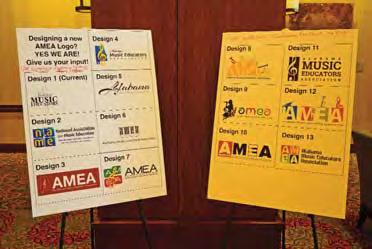
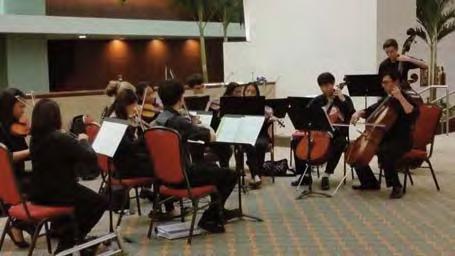
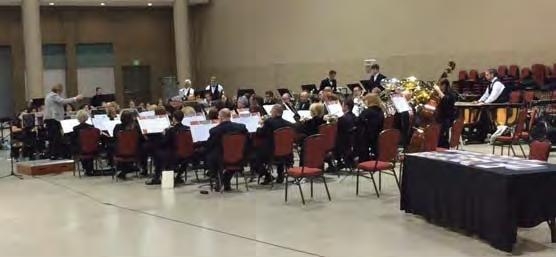
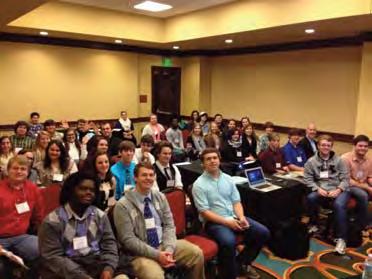
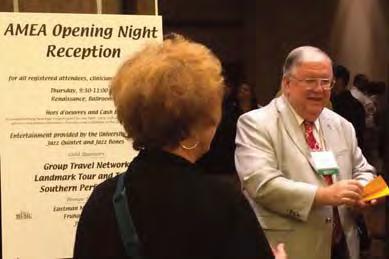
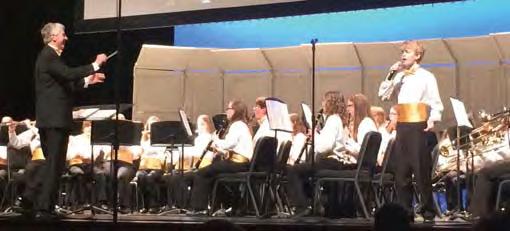
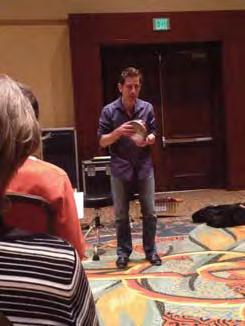
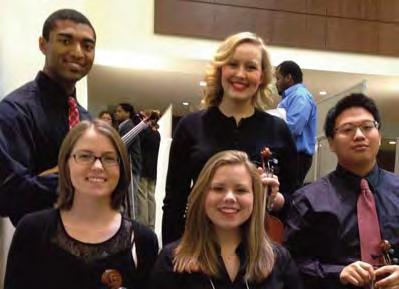

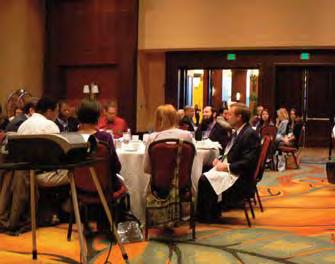
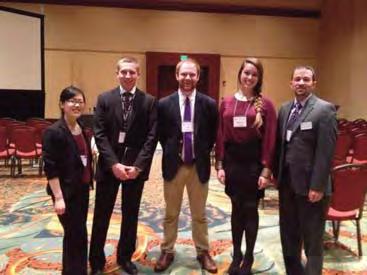
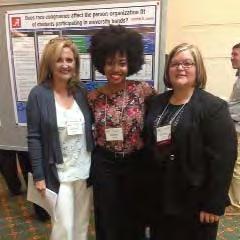


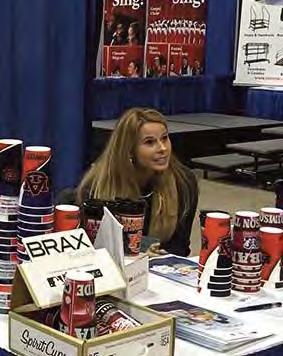
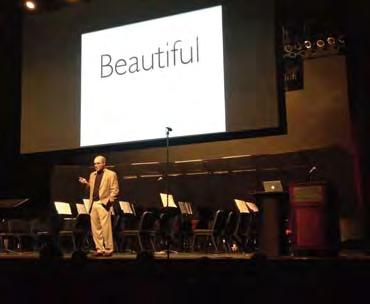
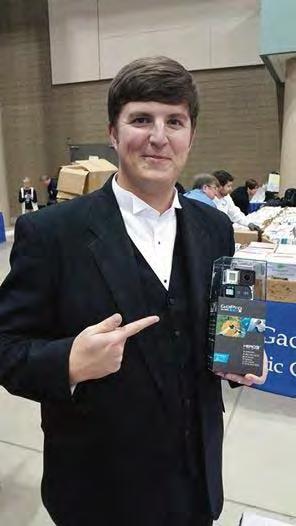
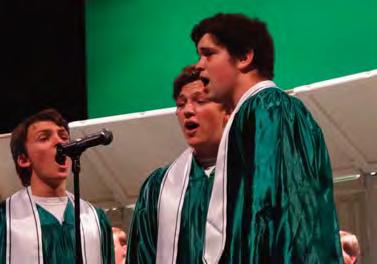
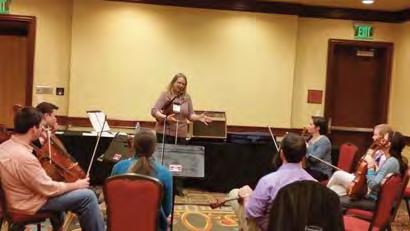
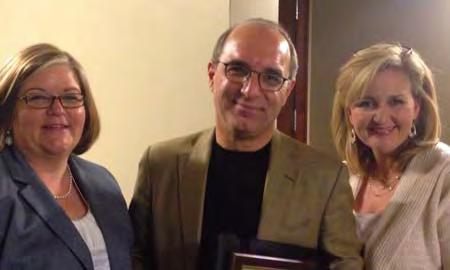

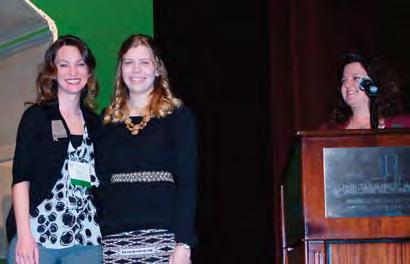

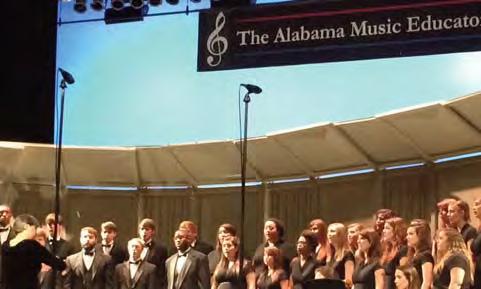
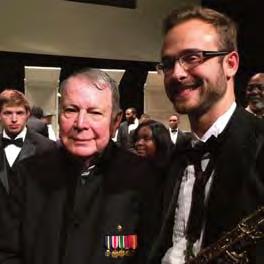
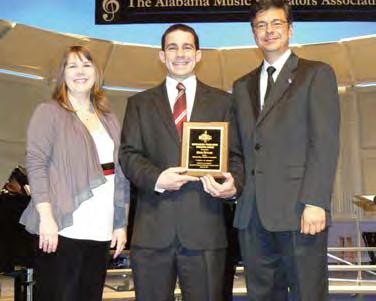


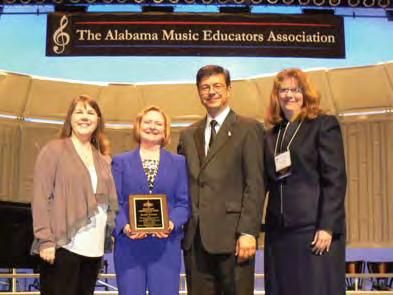
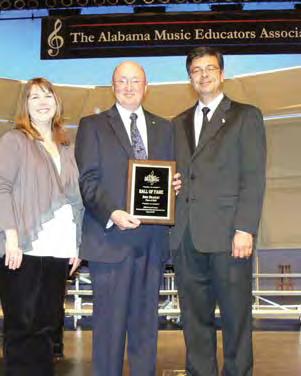

25 years of Continuous Membership and increments of 5 years after that (See page 57 for a list of names)

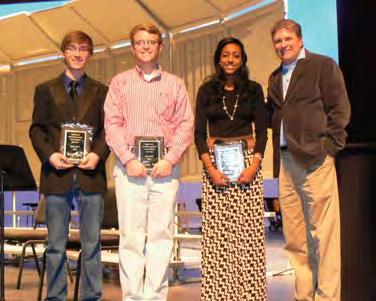
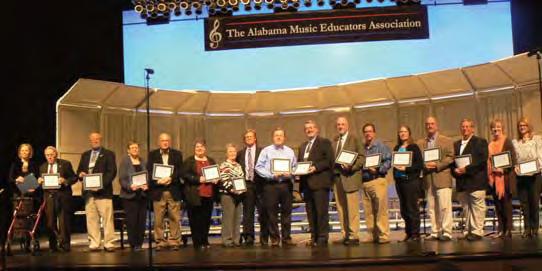

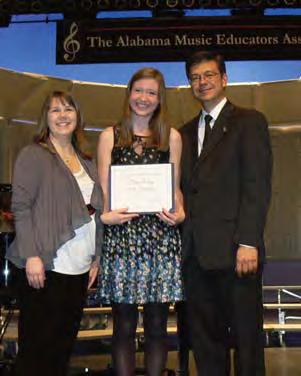
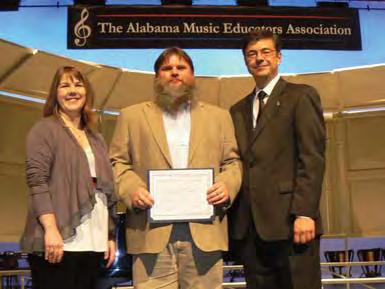
 byTimothy Oliver
byTimothy Oliver
On a warm, but pleasant summer day in July 2010, one of my colleagues from the theater department and I were enjoying conversation over coffee about one of our upcoming collaborations. During our visit, I mentioned my experiences at a concert that I attended while at a professional conference earlier that spring. It was a collegiate wind ensemble concert, but during the presentation theatrical elements such as lighting and staging of musicians were utilized to create a memorable and satisfying performance. Without the slightest hesitationmy colleaguestated that it was obvious those musicians knew how to manipulate aesthetic distance. I sat there stunned and agog in a mixture of confusion and awe. I knew what the words aesthetic and distance meant, but putting the two together was a new experience for me. Moreover, the fact my colleague spoke this compound term so casually but with utter conviction, demanded that I begin an investigation that has since altered my views as a music educator and conductor.
The next dayI initiatedmy research on aesthetic distance and quickly learned there are several different interpretations and applications of this concept. Numerous artistic genres - music, theater, visual art, dance, literature, film, and electronic media – utilize the concept of aesthetic distance. There are also three prerequisite distances, or some might call them conditions, all of which are intuitive, in order for aesthetic distance to be realized. The first is spatial distance, or the physical distance between the art object and the person interacting with the art. The physical environment in which we attempt to engage with music is most often associated with this type of distance. Secondly, temporal distance, the distance involving time and our experience with music. This type of distance is applicable to a single or often multiple musical experiences over time. Temporal distances tend to affect our musical views more than spatial distances. The third and final
prerequisite is psychical distance; a concept pioneered by Edward Bullough in 1912. Psychical distance is a psychological blending of our ability and willingness to be both personally and intellectually involved with music. Sometimes we make a conscious effort to be available to the music, while other times the music “chooses” us and demands our attention. In an effort to synthesize and extrapolate into a musical context various definitions and applications of aesthetic distance, I offer the following interpretation. Aesthetic distance is finding equilibrium among the ways we feel and think about musicassuming that we are spatially, temporally and psychically available to be engaged with music.
We have all heard the adage, “You can’t see the forest for the trees.” The implication of this notion,and its opposite, is perspective. Consider that following. Think back to a particularly satisfying performance you experienced as a conductor, performer, or audience member. What are your first memories of that performance? Did the performance move you emotionally? Were you in awe of the technical ability displayed? Perhaps it was a mixture of both? Whatever your answers, these questions can begin to raise your awareness of aesthetic distance.
Perhaps one of the most interesting sources on this topic is the 1961 article “Distancing” as an Aesthetic Principle by Sheila Dawson.
perfectly appropriate that each student will have varying degrees of aesthetic distance, provided they are willing and able to engage with the music.Each one of them brings their own biases and personal history to any potential aesthetic opportunity. Additional, the art object in question also has a significant influence. All students will not like,or experience to the same degree,every piece of music we as music educators offer to them. Furthermore, it is conceivable and perhaps even expected, that aesthetic distance changes over time regarding a particular piece of music.How many times have we or our students grown tired of a musical selection because it is played too often? In contrast, how often have we had the experience where our appreciation of a piece of music deepens with the passing of time? Again, the concept of temporal distance affects our musical views.
In searching for equilibrium of distance, a useful construct might be to think of a continuum which terminates on each end with either emotional or objective reality. Toward the left side of the continuum resides a more subjective perspective, personal attachments, or emotional content. While on the right side you find a more objective attitude, impersonal connections, and a logical, analytical mindset. Somewhere in between, but without a specific location or proportion, is the equilibrium, the aesthetic distance.
Among Dawson’s many assertions is that there is no optimum or correct aesthetic distance for each person, each artistic object or each occasion. When considering the students in our ensembles and classes, it is
It is important to note that when reality intrudes it violates aesthetic distance and compromises the experience. Reality and the prerequisite psychical distance are incompatible. Reality may take an emotional
or objective form. An example of emotional reality is when the person engaged with the music becomes overwhelmed with emotion, possibility to the point of physical reaction. Or,some music, and other artistic materials for that matter, may be inferior or offensive to some individuals which also precludes their willingness to engage. At the other end of the continuum, examples of objective reality might include substandard musical execution or poor environment. Consider for a moment a cell phone ringing, or a person coughing/clearing their throat at what always seems to be the most delicate moment of a concert. That is an all too frequent instance of objective reality!
Dawson and numerous other philosophers refer to areas outside of aesthetic distance along this aforementioned continuum as “underdistanced” or “overdistanced.” As you might surmise, one may be considered “underdistanced” or too close to the music when the emotional and subjective domains dominate the perspective of the individual. If the only thing a student can describe about a musical experience is the way it made them feel, chances are they were “underdistanced.” Conversely, one is considered “overdistanced” or too far from the experience when the music is perceived only through a dispassionate and objective perspective. As a general rule, younger musicians or individuals without a degree of musical education or experience will tend more often to trend toward under-distancing. Consider how excited students can be in a beginning band class about everything that goes on. More mature musicians or musically educated individuals will often trend toward over-distancing. It is worth reiterating that the exact amount of distance and proportions of areas representing underdistanced, aesthetically distanced, and over-distanced will vary for each person, each piece of music, and each occasion. It also seems reasonable that the degree and variety of distancing is a constantly moving variable on a continuum of experience within each performance.
Aesthetic distance according to Donald Stewart also has pedagogical implications. He indicates that students must understand the principles of aesthetic distance, perhaps even unconsciously, if they are to respond to critiques of their work. As music educators,
we know that some students take criticisms of the work personally. They note the grade or score and internalize it as a reflection of their personality rather than an assessment of their work. Stewart suggests that if students would achieve a measure of aesthetic distance they would derive greater benefits of the offered critiques.
As music educators we have dual relationships with our art because of the technical knowledge and expertise we possess as well as the appreciative, creative and emotional content of our performance or interpretation. It is expected that musicians can and often do purposefullymanipulate their aesthetic distance quickly and in a complementary fashion, which in turn may affect the aesthetic distance of others.We have the ability to be completely immersed in a musical moment, but retain the ability when needed to instantaneously shift our attention other cognitive domains.
I would like to suggest that in order to diversify the perceptions of our students about music we need to provide our students the means to facilitate them to also see both the forest and trees. Stated different, by raising our own awareness of aesthetic distance and deliberately altering it, we can design and implement strategies and conditions that offer our students more opportunities to explore how they think and feel about music, again provided they are available to be engaged in the experience.
To that end, I offer the following ideas which have been successfully implemented with ensembles at a variety of levels. The goal is to find equilibrium in how we feel and think about music. These suggestions may also be adapted for use with audiences too. You may already employ some of these ideas, but I hope that you will now utilize these them while being mindful of aesthetic distance.
Conducting is an efficient, non-verbal, and musical way to alter aesthetic distance. While a lengthy discussion about conducting is beyond the purview of this article, consider the following questions. How do you start the ensemble when rehearsing? Do you count-off? Counting off when you start your ensemble not only is counterproductive to expressive conducting, because you are
training your students that they don’t need to watch you, it automatically increases the aesthetic distance. How much eye contact do you offer your ensemble? Your eyes are the most expressive part of your face. Eye contact is a great way to reduce aesthetic distance. Good eye contact also is a great help with classroom management. How expressive and varied is your gestural vocabulary when conducting? Providing your ensemble with only a mirrored beat pattern most likely will not help to inspire or reduce the aesthetic distance of your students.
Perhaps at no other time in music history has it been easier to interact with guest artists, which could include composers, soloists, conductors and other ensembles. Technology and social media have been very helpful in this regard. For example, I have yet to interact with a composer who did not enjoy hearing that we were performing their music. Very often they are enthusiastic about receiving email correspondence, commenting on recorded rehearsals or attending them virtually through platforms such as Skype, and when their schedules permit and resources allow being a composer-in-residence. These are great opportunities to alter aesthetic distance in either direction, but usually I have found it brings students much closer, emotionally to the music but tempered with objective insights that only the composer can bring.
One of my mentors at Florida State University, the late Dr. James Croft had a saying which has always stuck with me and been a staple of my teaching, “By their forms,shall ye know them.”Knowing the form of a composition is essential to effective rehearsals. If you know the architecture and structure of a piece, when you rehearse it, you can logically and systematically take it apart and put it back together. When students also know the form, they become more adept at listening for new or recurring thematic, rhythmic and harmonic patterns resulting in opportunities to increase their aesthetic distance. The same is also true of intonation tendencies. When
students know who has the third or seventh of a triad, both of which usually require significant adjustments to achieve just intonation, that also can alter their aesthetic distance.

With the pressures of upcoming performances and finite amounts of rehearsal time, it can be very tempting to forego the time required to ask students meaningful questions about the music. From a classroom management standpoint, proctoring a classroom discussion, particularly with the logistics involved with most ensembles,can be challenging. It can also be well worth the effort. Questions do not need to be abstract or existential, but can be as simple as, “Please raise your hand if you sing/play the melody.” Over time the questions can evolve into more complex items. One of my favorite questions, which does creep into the existential realm, is, “Why do you think the composer would write this particular item in this fashion?”
Whatever their responses, it is important to be open to their answers since typically, but not always, this can be a way to decrease the aesthetic distance of the students.

Again, taking the time to listen to music in rehearsals can sometimes fall to the bottom
of our list of priorities. However, when comparing interpretations of works, or even sections of works, hearing other musical opinions often makes us question or reaffirm our own. Further, recording rehearsals and performances then listening to them in class can be very illuminating. Very often it serves as an opportunity to increase the aesthetic distance, because the recording isn’t biased and doesn’t lie. It is objective thus providing students with not only an aesthetic distance alteration, but also an opportunity for authentic assessment.
Talk to the audience during a concert
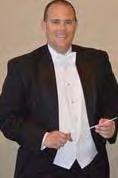
An educational festival for elementary, middle, and high school students in band, choir, and orchestra
As I once explained to my daughter when dining at a local Mexican restaurant when she asked about the bottle of hot sauce on the table, a few drops can literally spice up your meal; too much though can have disastrous consequences. The same is true for interacting with the audience at a concert. Some brief comments offered to the audience about some feature of a piece to be performed, a short playing of an important theme, or just a personal story germane to the piece can be a very effective way of altering the aesthetic distance of your audience. Presumably, you have already done this with your students. While I don’t talk before every piece at a concert, I continue to be surprised by the number of audience members who tell me that they enjoyed a particular remark about a piece or that it helped them to better understand the music. While I know I am in the minority, I think the model which many professional and collegiate conductors employ of not talking to the audience is a mistake. This only serves to increase the distance of our audience at a time when our profession definitely needs our audience to feel connected and invested in what we are doing as musicians and educators.
www.SMMFestival.com or call:1-855-766-3008
Aesthetics is a branch of philosophy that is concerned with the nature and appreciation of beauty. It can be a daunting subject to consider since its roots stretch back to Aristotle and beyond. However, as esteemed music educator Edward Lisk noted in the previous issue of ala breve, “Through music study, students experience the beauty of musical expression….No other discipline
addresses such ‘living or life priorities’ in the manner which music does.” Attempting to alter the aesthetic distances of our students doesn’t mean we dictate their responses to music;rather it provides students the opportunity to diversify the way in which they experiencemusic. As music educators we have the capability of facilitating and presenting wonderful and artistic performances and musical experiences;carefully and thoughtfully balanced with objective precision and attention to technical details while offering our students, our audiences, and ourselves, the opportunity to be musically and emotionally vulnerable and therefore completely present in each moment. Admittedly, this is a difficult, perhaps even a little scary, but tremendously exciting goal worthy of our continuing efforts.
Ben-Chaim, D. (1984). Distance in the theatre, the aesthetics of audience response. Ann Arbor, MI: UMI Research Press.
Bullough, E. (1912). ‘Psychical Distance’ as a factor in art and as an aesthetic principle. British Journal of Psychology, 5, 87-117.
Dawson, S. (1961). ‘Distancing’ as an aesthetic principle. Australasian Journal of Philosophy, 39(2), 155-174.
Stewart, D. C. (1975). Aesthetic distance and the composition teacher. College Composition and Communication, 26(3), 238-243.
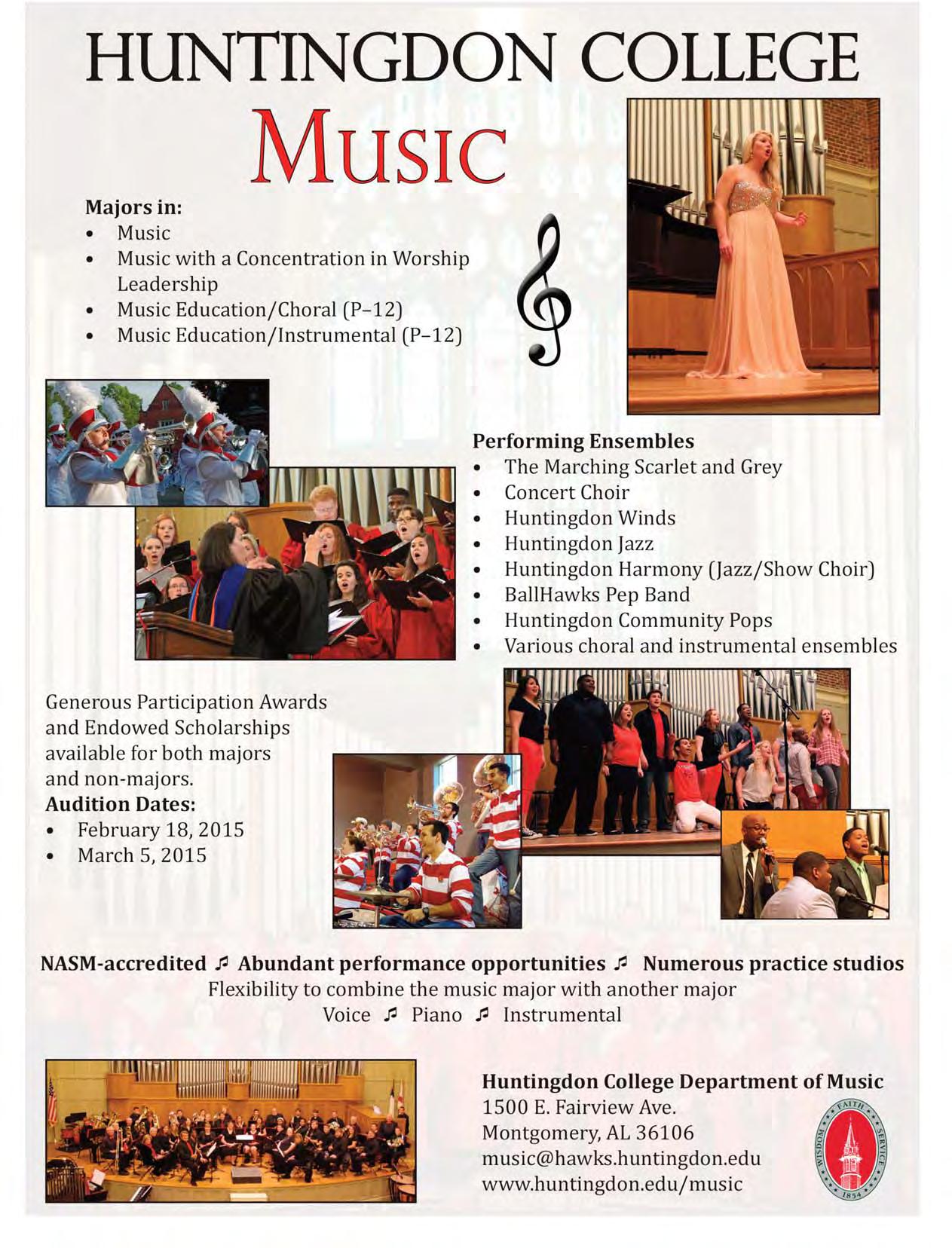

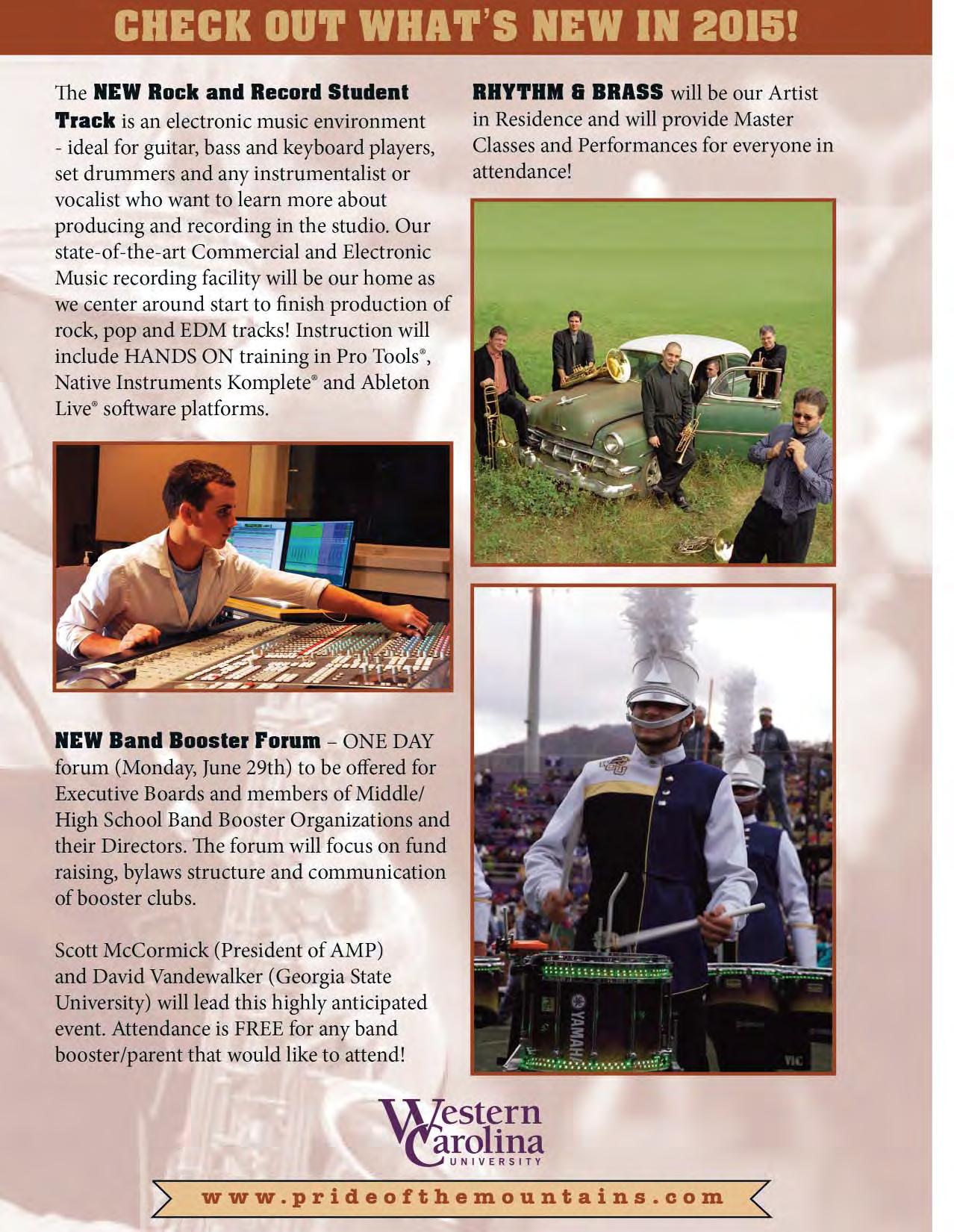
audition Dates:
saturday, november 8, 2014
saturday, February 14, 2015
saturday, march 14, 2015
saturday, april 4, 2015
additional Dates available by request
Degrees:
bm with Concentration in music education (Instrumental and Vocal)
b m with Concentration in Performance (Instrumental and Vocal)
b m with Concentration in elective studies (business or specific Outside Fields)
mm with Concentration in music education (Instrumental and Vocal)
m m with Concentration in music Performance (Piano and Vocal)
m m with Concentration in Collaborative Keyboard
the university of south alabama Department of music, through its innovative curriculum, empowers professional musicians, music educators, and those who wish to enrich their lives through the arts. the Department serves the needs of the university to promote general education and to provide a vital cultural link to the great state of alabama and to the Gulf Coast region. Its excellent facilities and faculty, promotion of technology, and dedication to life-long learning provide a wide spectrum of experiences for both the student and the community.
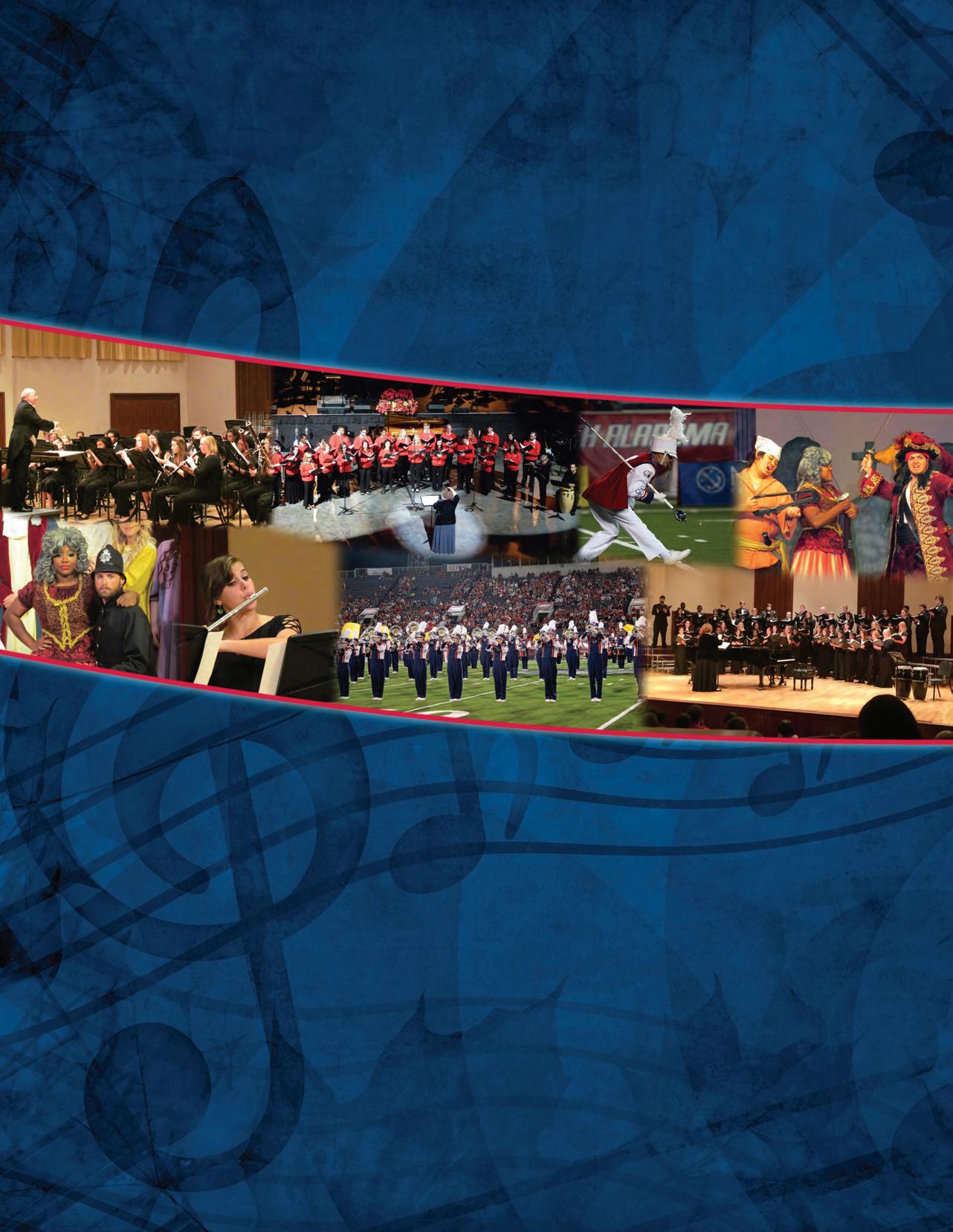
enseMbLes
Instrumental ensembles
Wind ensemble
symphony band
symphony Orchestra
string ensemble
Jaguar marching band
Jaguar Pep band
Jazz ensemble
Tips That Click this month explores what goes on in the first minutes of band class in outstanding programs. I was able to sit down with three experienced teachers for a few minutes and “pick their brains” about what has worked well for them in efficiently warming up and developing technical skills with their bands.
Randall Key is the Band Director at Hartselle High School, where he has served for 11 of his total 21 years teaching. He previously served as Assistant at Cullman High School. “We begin each rehearsal with intervals, the five note scale legato, slurred, marcato, and then 12 major scales. After the scales we use Symphonic Warm-Ups
For Band by Claude T. Smith throughout symphonic season. We also use rhythm pages 40 and 41 from Exercises for Ensemble Drill by Raymond C. Fussell. Starting 2nd semester we add 42 Chorales For Band edited by Philip Gordon. I like the Claude T. Smith book because it has rhythm pages, etudes, and contemporary chorales. The etudes and chorales are written in every key and it challenges band students in several different areas”.
purchase individual copies. It really has everything I need and I am so used to it. I generally start it in the second year. I introduce lip slurs and the scales and rudiments and keep expanding these all year. There are also interval studies and short etudes in all keys so we add these as the year progresses. I also utilize the chorales and tuning exercises. There really is a little of everything in this great book as it also includes dynamic studies, a glossary and a short theory section. I don’t do the same regimen exactly the same way from year to year. I adjust it to fit the strengths and weaknesses of each class and what’s going on. The book is suitable for use through high school, so I like that students can buy one inexpensive book and keep it through the years.”
the student could make a tangible connection. I also used Section 9 and 10 of this book to develop and reinforce rhythmic skills and prepare for sight reading. Again, this is using unison melodic material with the idea when you get matching energy tone quality form each individual in the ensemble, then the chorales will have better balance and sonority. I used the chord section (Section 1) of Ensemble Drill, but really like using Chorale Masters by James Curnow for chorale work. This book presents the melody part as a unison line that can be rehearsed before presenting the harmonization. I would use just a phrase or fragment of the chorale so that the students could concentrate on making all elements sound balanced and perfect”.
Amanda Ford is Band Director at Pike Liberal Arts School in Troy. She has served as an ABA district officer and adjudicator and taught high school and middle school in the public schools of Alabama earlier in her career. Her experience spans over 27 years. “The book I use all year is I Recommend by James Ployhar. Tony Whetstone turned me onto it years and years ago. It is still only $6.00 a book, so I have students
Carol Jacobs led bands in Jefferson County for over 15 years, most notably at Bragg Middle School and Mortimer Jordan High School. She still serves as an adjunct instructor and private lesson teacher for several programs in the Birmingham area. “ I used a number of different books during the early years of my career and found that each had its strengths and weak points. I later took a “cut and paste” approach and created my own handout using sections from several sources. One book that I always utilized is Exercises for Ensemble Drill by Fussell. I would use the scale exercises (Section 8) daily and try to find a “form” that the students liked and drilled this extensively, being very picky on how it was being performed. The variety of things that can be explore with this one section is very extensive. I tried to employ the keys that were being used in the literature we were performing so
Hopefully the advice given above will generate some ideas that will help all of us or perhaps reinforce what you already do daily. All three directors I interviewed emphasized the importance of not using the routines as an end in themselves; the concepts taught must be intentionally transferred to the literature being prepared or the time is essentially wasted. There have been many warmup materials added in the last few years, but I find it interesting that successful teachers seem to revert back to the “tried and true”!
Rho Chapter of Phi Beta Mu International Bandmaster Fraternity is committed to the improvement of bands and band instruction in this state. Comments on this column and ideas for future columns are welcome! Please email: pemin@mac.com,

For professional choral musicians, the good news is that every year we increase professional knowledge of how to best teach and conduct our choirs. This is also the bad news, however, as it requires atime investment to learn about and possibly implement new methods and materials. Often new knowledge is gleaned from the music education research community, or highly successful practitioners, or composers and publishers who provide new music options, or graduate study, etc. The question then becomes: How can we best disseminate new information so that teacher/conductors can make informed decisions and perhaps prioritize what is most important? Complicating the process of defining priorities is that they may very well differ among schools, dependent on variables which impact student learning and success: student population demographics, school size and infrastructure, administrative and parental support, available funding, etc. The purpose of this paper is to provide some suggestions for prioritizing those things that have strong impact on teacher and student success in middle and high school programs that include developmental groups, those just learning to become choral performers.
Research activity among choral scholars has lagged behind other musical and pedagogical research for several decades; however, within the last 15-20 years, choral research activity has greatly increased. Information on a wide array of choral topics is readily available electronically, reflecting a breadth and depth of study. As young teachers prepare for careers in choral music and pedagogy, they likely enter knowing the professional current “best practice” gleaned from their university curricula. Such topics as teacher effectiveness, strategies for establishing instructional pace in rehearsal (a great deterrent for classroom management problems), vocal pedagogy methods that contribute to healthy vocal training, programs that develop students (such as leadership development), specialized training to embed critical thinking instruction into rehearsals, teacher leadership development that supports professional participation, creating competence in teaching
students to perform expressively, new methods for attaching musical learning to performance activity (concepts, skills, etc.), as well as and many other important topics. Teachers not recently graduated may lack some of this training, and could be at a disadvantage when functioning within a school environment built around current knowledge and practice. Thus, it seems important to provide opportunities for professional growth, perhaps even above and beyond typical district in-service programs. Staying current in any field is a lifelong challenge, and teaching choral music is no exception. It is not enough to acknowledge that new information exists just because it is found in scholarly music research journals that all can access. It is unrealistic, however, to assume that music teachers will independently find this needed information—-let’s not forget that dragging home after a long teaching day probably does not lead to reading music research journals until 2:00 am. If true dissemination is desired, then some method of delivering knowledge and training to teacher/conductors is required beyond just suggesting particular journals to read.
The phrase “Don’t try this at home”, often used in television commercials involving some daring deed, suggests that a specific, controlled environment is required for safely accomplishing said task. In the case of choral teachers remaining fresh via learning new teaching knowledge and practices, I believe similarity exists: there must be a safe, nurturing environment to successfully acquire new pedagogy. Perhaps a “translator” to connect research findings with busy teachers might support success. Such things as earning a graduate degree, taking a single graduate class or summer workshop, attending professional conferences with carefully targeted sessions aimed at new information,or any other opportunity that provides a specialist to inform, encourage, and perhaps inspire is likely a helpful choice. This means money, if a school district is not supporting the event, but it is money well spent. Consider it an investment in yourself, and we are all worth it. The following text offers guidance for (1) choosing repertoire that enhances the probable
by Judy Bowers, Florida State Universitysuccess of singers who are novice, or who just lack experience, training, or exceptional ability, and (2) creating a possible strategy for empowering novice choral students to sing expressively.
Structuring successful learning environments has been a prominent topic in for several decades, and Madsen &Kuhn (1994) have long recommended an 80/20 success ratio between achievable and challenging tasks. This ratio implies students should achieve success approximately80percent of the time, but 20 percent of the task should represent a challenge. The 80/20 ratio links directly to motivation, because if a student succeeds too often (tasks are too easy) or fails too often (tasks are too challenging), they can become bored, or lose interest and cease trying. Frequent success paired with occasional failure is one formula for maintaining high student engagement that can aid teachers in establishing a desired rehearsal environment. Literature selection for beginning middle/high school singers, however, may well be the number one variable affecting teacher success with developing choirs.
Repertoiremust be accessible for singers to maintain a reasonable success rate. However, middle/high school developing singers often reject appropriate music taken from elementary school curriculathat might seem childish or immature, so step one is that teachers must work to select age-appropriate singing material, even in the early stages of singing development. That being said, one elementary teaching strategy that should not be omitted with beginning singers who lack training and experience is the Independence Hierarchy (Bowers, 1999). Keeping students singing increases their engagement, supports well-paced rehearsal instruction, and serves to motivate when success is accomplished. The Independence Hierarchy structures sequenced, successive progress from unison singing through independently singing part songs (these often have identical rhythm and text, with difference occurring only among pitches—-this music is the hardest for developing singers to manage yet many
teachers begin with this music). Voicing the choir to create sections and then moving immediately to advanced choral literature is likely counter-productive because it may require extended drilling (banging out the harmony notes “one more time so you really have it”) that can still resultin students losing the parts when sung together. In addition, rehearsal pacing, classroom management, and classroom climate generally deteriorate in rehearsals involving inappropriate music. Thus, literature selected for novice middle/high school choirs, or developmental groups of all ages, actually, plays a huge role in rehearsal success. The figure below provides an adaptation of the sequence elementary music teachers use to establish harmony singing across time. There is ample good music available that reflects each step. Teacher judgment must determine how long a choir should stay at each level. Some students will be able to move toward singing step ten in a matter of weeks; these students are likely bright, talented, and have experience using their voices. In contrast, some choirs may not get through all steps for some or all of a school year and that’s also fine as long as they progress.
on a scale from 1 to 10, they perceive themselves as a 10. In reality, learning pitches and rhythms is actually a 10 on the goal of pitch matching and singing accuracy, but it is a ZERO on the goal of expressive singing. To move a choir forward, the teacher may choose to utilize rules and then transfer them to their concert repertoire. Since these rules can be anything valued by the teacher (there is no right or wrong set of rules), a rule allows students to generalize from piece to piece. Further, the rules may need to change with the music (various performance practice rules, certainly) and that’s fine because it underscores the idea that decision-making (determining if something is an appropriate rule in a new setting) is an important part of critical thinking. As students progress, they should need teacher direction in their personal music making less and less. This frees the conductor to rehearse, to accomplish performance goals that reflect his or her vision of this piece——in other words, to be a conductor.
Some examples of rules appropriate for beginning middle/high school singers who have little musical background are detailed below. These serve to clarify the process and should be adapted to meet personal preferences.
1. Sing a melody. For middle school mixed choirs, find phrases that fit each section. Adapt treble music for SATB singers.
2. Add an ostinato (rhythmic, melodic).
3. Sing partner songs.
4. Add a descant.
5. Sing chord roots (Choksy, 1981).
6. Add vocal chording
7. Sing phrases or sections of a round.
8. Sing a round.
9. Sing transition pieces (music containing multiple hierarchy elements).
10. Sing repertoire in two, three, or four-parts.
Transferring knowledge from one setting to the next is made easier for students when some general principles are established for their use, i.e. rules to guide decisions about the transfers. Many beginning middle/high school music classes include students with no musical background, so rules must be very simple and related to what is also being taught by the teacher. Once students have established accurate performance (correct pitch and rhythm), they often feel their work is done—-
RULE OF THE STEADY BEAT. When singing any note value longer than the steady beat value, the singer should crescendo. Establishing a general principal saves time and frustration by preventing errors with a rule that is applicable much of the time. The teacher/conductor must address only those instances when a crescendo is not desired or when the rule was implemented incorrectly.
RULE OF CONSONANT RELEASES. This rule can be implemented across rehearsal with all music or can be applied to each song and serves to have singers follow a guideline for most of the final consonants. The rule might structure using the last full beat, or the last half of the beat, or whatever is appropriate for the song and counting ability of the ensemble. Students assume some responsibility for releases by using the rule, which permits the conductor to address only those unique releases not suitable for rule application.
RULE OF DIPHTHONGS. Beginning singers who do not yet monitor or filter the vowel sounds produced in rehearsal should apply this rule. Identifying diphthongs and prescribing a method for performance (sing the first sound throughout most of the value and then quickly add the second sound) serves to educate and prevent most errors. When the teacher/conductor stops to address incorrect singing, this rule serves to foster student analysis of the problem (listen, identify, analyze, evaluate).
RULE OF PUNCTUATION. This rule contributes greatly to phrase awareness of beginning singers. The rule requires a lift or break for every punctuation throughout the piece. The reverse is also true: do not break if no punctuation exists (this rule is magical at correcting this with beginners). While there is certainly punctuation in prose and poetry that is ignored for musical reasons, this rule makes singers aware that a decision must be made and allows the teacher/conductor to only teach the exceptions to the rule.
RULE OF THE SLUR (and other articulations). While most students can explain a slur, a surprising number of singers cannot sing one. This rule requires a tenuto over the first note under the slur, followed by all other notes in the pattern without a tenuto marking.
OTHER RULE IDEAS. Anything important in a piece can become a rule, so we teach it once and then students can use it. Such things as the Rule of Dissonance, Rule of Baroque style (or any style period), Rule of Word Stress, Rule of Dynamic Contrast, Rule of Singing Line (whatever is appropriate the piece: < >, or <<<<, etc.), Rule of Texture, ANYTHING!
There is no magic in any of these sample rules. Rules should reflect those behaviors valued by the teacher and should engage students more in the rehearsal process. Rules provide an opportunity for students to use higher order thinking skills because when an expectation is established (the rule), students must determine if it was met, or why not,if it was not met. From this beginning, students can develop judgment about applying rules; if something doesn’t sound good, what could the choir do (what rule could we apply?) to improve the sound. Rules can be an excellent means for establishing independence with singers who lack formal training.



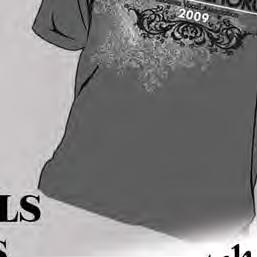
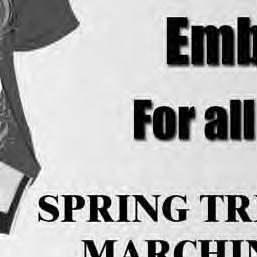

Certainly there is no one magical way to teach. The magic comes from a teacher; the person whose judgment determines what literature and what pedagogy will best suit the needs of singers in each particular choir. When choral teachers broaden their knowledge of repertoire and teaching stratagies, this simply means they have a much broader range of choices; the implication being that broader choices of literature and pedagogy allow more subtle discrimination by the conductor/teacher. Staying professionally current is essential. Teaching middle/high school singers in developing choirs to become independent musicians can be boring drudgery or highly rewarding. The distance between these two perspectives in developing choirs, however, is probably quite small. One bridge that could lead from boring drudgery to highly rewarding is indeed staying current with best practice across the years—-and this should perhaps be our top priority!

Bowers, Judy. “Classroom Management in Choral Settings.” Florida Music Director, 1999, Vol.53, No.
3, pp 8–11.




Bowers, J. (2011). Structuring Success in Beginning Middle School Choral Ensembles, in Teaching Music through Performance in Choir, ed. Frank Abrahams. Chicago: GIA Press. Bowers, J (2008). Building Early Choral Experiences, The Middle School Program. In, Holt, M and Jordan, J. The School Choral Program: Philosophy, Planning, Organizing, and Teaching, Chicago: GIA Publications, Inc.
Choksy, Lois(1981). The Kodaly Context. Upper Saddle River, NJ:Prentice Hall.. Madsen, Clifford K., and Terry Lee Kuhn (1994). Contemporary Music Education. Raleigh, NC: Contemporary Publishing Company..



Judy Bowers, Professor of Choral Music Education at The Florida State University, teaches undergraduate and graduate courses in choral music and music education, and conducts the Women’s Glee Club.
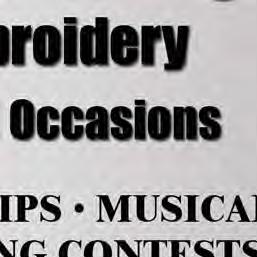
Human predisposition to respond to music through movements of the body is evident to anyone who has observed infants or toddlers engage with music. From the earliest years of life, infants demonstrate their awareness of music by turning their heads towards a musical toy; or they express sheer delight by moving their arms and legs upon hearing someone sing an upbeat song. As infants move into toddlerhood and childhood, they begin to move their bodies with greater precision and culturally recognized style (i.e., dance) to the music they hear or make (Campbell, 2010; Moog, 1976; Moorhead & Pond, 1978). This inherent need to experience music through movements of the body throughout life might be explained because of the links between the motor and auditory systems in the brain (Sacks, 2007). Music and movement are two deeply connected human phenomena.
There is further evidence of this connection in some cultures, where there is no separation between the concepts of music and dance. “Dance is music and music is dance in African cultures. The two are inseparable and in many African languages, there is not a separate word for dance” (Welsh, 2010, p. 30). The Native American Blackfoot people use the word paskan to mean dance, music, and ceremony (Nettl, 2005). Clearly, movement is an integral part of the music experience, from birth to adulthood.
It should be no surprise then that movement would play a role in music learning and teaching. Movement has been used as a way to help students internalize and/or reinforce their conceptual understanding of music.It has also been used as a way for students to express what they hear in music, what they know or have learned (Kerchner, 2014). Jacques-Dalcroze, who developed a teaching system of developing musicianship through movement (commonly known as Dalcroze or Eurhtyhmics),believed that students needed to develop their musicality first through active sensory experiences (movements of the body) before moving into more cerebral types of musical training (reading notation) (Jaques-Dalcroze, 1921). Rudolf von Laban believed that movement helped to develop greater creativity and self-awareness in people; his ideas would be influential to many music educators and applied in practice (Laban & Ullmann, 1971). Many others have written about, researched, and used movement as a means to help students develop their musicianship. For a comprehensive treatment of the topic, see Abril
(2011). The purpose of this article is to explain how movement can impact music learning and to suggest some ways to harness the power of movement in music teaching.
Keeping a steady beat is essential to anyone wanting to perform music, whether kindergarten students singing a song in class to middle school students playing the first exercise in a wind method book. How can movement training help students improve their ability to maintain a steady beat or perform more accurately?
Movement training in general music classrooms has been shown to have a positive effect on the ability to keep a steady beat. In one study (Rose, 1995), six different elementary classes were assigned to one of two instructional groups. The first group received music instruction through a Dalcroze approach, with a substantive amount of movement; the second group received music instruction primarily through verbal instructions. After 32 weeks of instruction, students who received the movement-based music lessons performed significantly better on a test of beat competence. It appears that the teaching method itself (i.e., Laban or Dalcroze) or type of movement experiences (i.e., locomotor or nonlocomotor)does not make much of a difference; any movement experiences positively effect beat competency in students (Blesdell, 1991; Croom, 1998).
Movement is also valuable in ensemble classroom. In a study (Rohwer, 1998), sixthgrade students who received ten weeks of movement instruction in the instrumental music classroom performed significantly better at a synchronization test than were students who received traditional rhythm instruction, without the use of movement (Rohwer, 1998). Boyle’s (1970) classic study found that high school students who were trained to tap their foot to the steady beat were more successful at rhythmic sight-reading than those who did not receive such training. Jordan (1986) reported improvements in high school students’ rhythmic performance skills after applying music lessons that included Laban movement effort factors (flow, weight, time, and space). What seems clear from these and other studies is that infusing some sort of movement experiences in the music classroom can make a positive difference in beat and rhythmic competence.
There are many ways to incorporate movement into any music classroom. A recent article in the Music Educators Journal provides a wealth of ideas for the use of movement effort factorsto improve rhythmic competence in the large ensemble settings. For example, one activity they suggest focuses on time: You can “use a programmable metronome to create tempo changes of the desired length and intensity. Using this as the musical stimulus, have students march, pat or conduct with musicality and accuracy” (Conway, Marshall & Hartz, 2014, p. 64). Another activity, focused on weight, asks students to “demonstrate accents [in their music parts] with gross motor movements….then transfer this understanding to the smaller motor skills of bowing and articulating” (p. 63).
You might want students to be aware of the relationship among time, space, and energy in rhythm (a concept of Dalcroze Eurhythmics). To do so, play a melody on the piano and ask student to clap a steady beat to the music. Vary the tempo from very fast to very slow and ask students to be aware of the ways space and energy changes with the changing tempo. Students will soon realize that a slower tempo (time) requires the use of much more space and less energy than does a quick tempo. There are myriad book, articles, and materials available if you want more practical ideas for infusing movement into your music instruction.
Movement instruction in the music classroom is often applied to rhythmic concepts but research suggests that it can improve melodic competencies of different sorts as well. One study (Crumpler, 1982) reported that first grade students who were provided with music lessons that were Dalcroze-based (included movement games and activities) were more successful than those who received similar lessons from popular music textbooks (with no movement) at making pitch register and contour discriminations. Similar findings were reported in a study with third-and fifth-grade students (Berger, 1999).
The use of movement has been found to be effective for improving singing skills and song recognition. The use ofCurwen hand signs, that is the movement of the hands in space and time to
Some Practical Movement Resources for the Music Classroom
Level Title Author Publisher
Early Childhood
The Book of Movement Exploration
Childhood From Wibbleton to Wobbleton
Childhood Movement Plus Rhymes, Songs, and Singing Games
Childhood & Adolescence Rhythm and Movement
Childhood & Adolescence Feel It!
Childhood through Adulthood The Rhythm Inside
Childhood through Adulthood Music Across the Senses
relate to certain sung pitches, has been found to lead to more accurate and quicker interval identification in students (Steeves, 1985). Students are also better able to identify songs more accurately with coordinated movements than with other cues such as rhythmic chanting (Dunne-Sousa, 1988). These findings may partially be explained by a “neurophysiological link between gross and fine motor control in body movement and in muscles engaged in the vocal apparatus” (pp. 65-66). There is evidence from the research to support the use of movements of many sorts (from hand signs to full body movements) as a means to improving awareness and understanding of pitch related concepts and skills.
Moving the body while singing can impact the quality of that singing. In one study, Liao and Davidson (2007) found that children’s bodily movements reflected the quality of their voice when singing, with size of movements reflecting dynamics and continuity reflecting articulation. Other studies have reported that children’s (Campbell, 2010; Moorhead & Pond, 1978) and adolescent’s (Ebie, 2004) movements support their voices and reflect their expressive intentions.
Ideas for the Classroom
Here are some ideas for incorporating movement to improve melodic understand and performance. If you want to focus on melodic phrase for instance, have students listen for the phrases in a performance of a piece that they are learning. As they listen they should draw the phrase in the air with one finger. Once they figure out how long the phrase is, they should be challenged to manage their space, time, and energy so that they do not end before the phrase ends. For a locomotor variation on that theme, have students can walk the phrase in space from point a to point b. Each student can predetermine the distance by placing a red plastic cup on point a and a blue plastic cup on point b. As they listen, sing, or even play the melodic phrase they should walk from point to point.
John Feierabendand Jane KahanGIA James HardingPentatonic Phyllis WeikartWadsworth Elsa FindlayAlfredPress
Music
Robert AbramsonAlfred Music Julia Schnebly-Blackand Stephen Moore Alfred Music Jody KerchnerOxford UniversityPress
Given the abstraction and mystery of producing sounds in the voice (Abril, 2007) and the support from the research described above, you might consider incorporating movements to represent pitches in singing instruction. Curwen hand signs, as often used in the Kodály method, where a particular positioning of the hand represents a particular pitch, might prove beneficial in developing interval identification and sight singing abilities (see Choksy, et al., 2001). Using a Dalcroze approach, you might focus on the pitch contour of a melody by having students move the contour with their bodies or draw the contour in the air with their arms (see Mead, 1994). Finally, allow students to freely move their bodies as they sing as a way to help them develop more expressive and/or supported singing.
While there is less research that has tested the effect of movement instruction on music listening, there is some evidence that it does positively impact listening skills. Sims (1986) reported that preschool children who participated in some movement experience with music were more attentive when listening to that music in comparison to those who only listened passively. Another study found that children who moved while listening to music scored significantly better on a measure of form perception than did other students who followed a listening map without moving (Gromko & Poorman, 1998). Giving children experiences moving spontaneously (i.e., freely) to music might improve their ability to represent that music using graphic notation (Fung & Gromko, 2001).
Designing listening experiences that incorporate movement for students can be divided into two types: (a) directive movement experiences, those that are led by and designed by the teacher, and (b) creative movement experience, those that are generated by students (Abril, 2011). An example of a directive movement experience would be
having students copy your choreographed movements,while listening to Queen’s song, “Bicycle Race.”Another example would be to teach students a folk dance from one of the songs Alfred Reed used in his band piece, Armenian Dances. These experiences can focus students’ attention on certain aspects of the music, from its expressivity to its historical roots to its form. Creative movements give students the freedom to generate their own movements as they listen. For example,instead of or in addition to having students follow or create visual maps to represent a section from Stravinsky’s Rite of Spring, you might challenge students to create a movement piece to represent the music they hear. The goal is not to create choreography as much as it is to help students develop a deeper understanding of the music they are listening to. Another example of creative movement is to give students one or two specific Laban effort actions (dab, flick, punch, slash, glide, float, wring, press) and ask them to improvise movements inspired by those actions as they listen to music. For more information on movement and listening, see Kerchner (2014).
Jonathan, a twelve-year-old boy, said it best in an interview talking about his experiences in a school music program: “…I can’t sit still long. Nobody should have to sit still when there’s music. It moves, and makes you move” (Campbell, p. 198). Jonathan’s insightful comment speaks volumes, and it is supported by research, which has consistently shown that humans (especially children) have a natural tendency, need, and desire to move to music. Patterns from the research also show that movement offers a window into children’s musical perceptions, improves their music competencies, and helps to develop deeper understanding. It does not seem to matter what specific approach or method you use as long as you do incorporate some movement in music instruction. Consider how movement can be added to your teaching such that it helps to meet curricular objectives and goals, with the ultimate purpose of deepening students’ musical
understanding, skill, and overall musicianship.
Abril, C. R. (2011). Music, movement, and learning. In R. Colwell & P. Webster (Eds.), MENC handbook of research in music learning (pp. 92-129). New York: Oxford University Press.
Abril, C. R. (2007). I have a voice but I just can’t sing: A narrative investigation of singing and social anxiety. Music Education Research, 9(1), 1-15.
Berger, L. M. (1999). The effects of Dacroze Eurhythmics instruction on selected music competencies of third- and fifth-grade general music students. Unpublished doctoral dissertation, University of Minnesota, Minneapolis.
Blesdell, D. S. (1991). A study of the effects of two types of movement instruction on the rhythm achievement and developmental rhythm aptitude of preschool children. (Doctoral dissertation, Temple University, 1992). Dissertation Abstracts International, 52/07, 2452.
Boyle, J. D. (1970). The effect of prescribed rhythmical movements on the ability to read music at sight. Journal of Research in Music Education, 18(4), 307-318.
Campbell, P. S. (2010). Songs in their heads (2nd ed.). New York: Oxford University Press.
Choksy, L., Abramson, R. M., Gillespie, A. E., Woods, D., & York, F. (2001) Teaching music in the twenty-first century (2nd ed.). Supper Saddle River, N. J.: Prentice Hall.
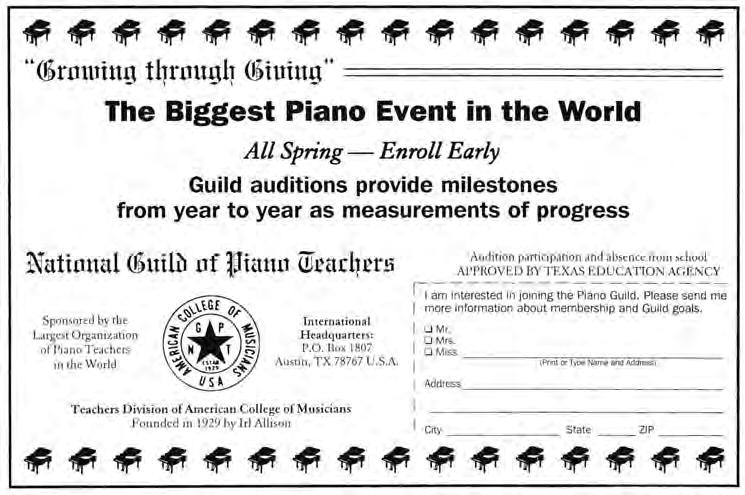
Conway, C., Marshall, H., & Hartz, B. (2014). Movement instruction to facilitate beat competency in instrumental music. Music Educators Journal,100(3), 61-66. Croom, P. L. (1998). Effects of locomotor rhythm training activities on the ability of kindergarten
students to synchronize non-locomotor movements to music. (Doctoral dissertation, Temple University, 1998). Dissertation Abstracts
International, 59/03, 763.
Crumpler, S. E. (1982). The effect of Dalcroze eurhythmics on the melodic musical growth of first grade students. (Doctoral dissertation, Louisiana State University, 1983). Dissertation
Abstracts International, 43/08, 2587.
Dunne-Sousa, D. (1988). The effect of speech rhythm, melody, and movement on song identification and performance of preschool children. (Doctoral dissertation, The Ohio State University, 1989). Dissertation Abstracts
International, 49/08, 2140.
Ebie, B. D. (2004). The effects of verbal, vocally modeled, kinesthetic, and audio-visual treatment conditions on male and females middle-school vocal music students’ abilities to expressively sing melodies. Psychology of Music, 32(4), 405417.

Fung, C., & Gromko, J. (2001). Effects of active versus passive listening on the quality of children’s invented notations and preferences for two pieces from an unfamiliar culture. Psychology of Music,29, 2, 128-138.
Gromko, J. E., & Poorman, A. S. (1998). The effect of music training on preschoolers’ spatialtemporal task performance. Journal of Research in Music Education,46, 2, 173-81.
Jacques-Dalcroze, E. (1921). Rhythm, music and education. Trans. H. Rubinstein. London: Dalcroze Society.
Jordan, J. M. (1986). The effects of informal movement instruction derived from the theories of Rudolf von Laban upon the rhythm performance and discrimination of high school students. Unpublished doctoral dissertation, Temple University, Philadelphia, PA, Kerchner, J. L. (2014). Music across the senses.

New York: Oxford University Press. Laban, R., & Ullmann, L. (1971). The mastery of movement. London: MacDonald & Evans.
Liao, M. Y., & Davidson, J. W. (2007). The use of gesture techniques in children’s singing. International Journal of Music Education,25, 1, 82-94.
Mead, V. H. (1994). Dalcroze eurhythmics in today’s music classroom. New York: Schott.
Moog, H. (1976). The musical experience of the pre-school child. Trans. C. Clarke. London: Schott.
Moorhead, G. E., & Pond, D. (1978). Music of young children. Santa Barbara, CA: Pillsbury Foundation.
Nettl, B. (2005) The study of ethnomusicology: Thirty-one issues and concepts. Champaign: University of Illinois Press.
Rohwer, D. A. (1998). Effect of movement instruction on steady beat perception, synchronization, and performance. Journal of Research in Music Education, 46(3), 414-424.
Rose, S. E. (1995). The effects of Dalcroze Eurhythmics on beat competency performance skills of kindergarten, first-, and second-grade children. Unpublished doctoral dissertation, University of North Carolina, Greensboro. Sacks, O. W. (2007). Musicophilia: Tales of music and the brain. New York: Alfred A. Knopf. Sims, W. (1986). The effect of high versus low teacher affect and passive versus active student activity during music listening on preschool children’s attention, piece preference, time spent listening, and piece recognition. Journal of Research in Music Education, 34(3), 173-191. Steeves, C. (1985). The effect of Cuwen-Kodaly hand signs on pitch and interval discrimination within a Kodaly curricular framework. Unpublished master’s thesis. University of Calgary, Canada.
Welsh, K. (2010). World of Dance: African Dance (2nd ed). New York: Chelsea House.
Success in nearly every field is commonly attributed to some combination of innate talent and hard work. There are those who argue that mastery is predominantly a consequence of innate talent and believe achievement of true virtuosity is only attainable for those born with extraordinary physical and mental characteristics. On the other side of that debate are those who believe that mastery is only possible for those who have a relentless drive to achieve, manifested through countless hours of hard work and dedication.
I am continuously amazed and inspired by the incredible ability and innovation displayed by the world’s top musicians. How do these individuals achieve such mastery? Were they each born with an extraordinary level of innate talent or is their achievement primarily a result of tenacious practice and perseverance?I decided that asking the masters themselves was the best way to try to answer these questions. How do they practice? How do they prepare for performances? What habits and methods do they credit most for their success?
Over the course of three years, I had the opportunity of interviewingsome of the world’s most successful performers and educators in order to explore their personal practice habits. I focused my attention on one instrument area, percussion, to minimize variables and provide quantitative constants between those interviewed. In all, I conducted thirty-six interviews with percussionists at various stages of their careers and in diverse areas of expertise. This group ranged from young virtuosos to legendary hall-of-famers, and from seasoned orchestral players to indemand soloists. By including a wide range of classical percussionists, I hoped to reveal those practice methods and philosophies shared by all great percussionists.
The thirty-six percussionists I interviewed were Joakim Anterot, Jason Baker, Kevin Bobo, Michael Burritt, Thomas Burritt, James Campbell, Omar Carmenates, Gary Cook, Christopher Deane, Brett Dietz, Matthew Duvall, I-Jen Fang, Mark Ford, Andy Harnsberger, Anders Holdar, John Lane, Julie Licata, Frederic Macarez, Payton MacDonald, Brian Mason, William Moersch, Jason Nicholson, Brian Nozny, John Parks IV, Paul Rennick, Emil Richards, Steven Schick,
Robert Schietroma, Joshua Smith, Gordon Stout, John Tafoya, Blake Tyson, Michael Udow, Ben Wahlund, Eric Willie, and Brian Zator.
What I discovered was unexpected - their practice habits are as unique and individual as their playing styles. Not only were there a seemingly countless number of methods, techniques, and philosophies successfully utilized, but many of their habits and preferences were in direct contradiction with each other’s.
However, the closer I examined the data, one commonality did emerge. All thirty-six interviewees exhibited an extreme devotion to practice, a discovery consistent with other studies done on the topic of high achievement. These studies are not limited to music or to any specific field, but were collected under the umbrella topic of success.
In Malcolm Gladwell’s book, The Outliers, Gladwell studied the practice trends of highly successful people. The closer he studied the habits of the most gifted and successful, the more evidence he found that innate talent routinely played a much smaller role than preparation.
In the field of music, this premise is also supported by a series of studies done in the early 1990s by psychologist K. Anders Ericsson.1 Ericsson’s team studied violinists at the Music Academy in West Berlin. The violinists were divided into three groups. The first group was comprised of the Academy’s ‘best violinists.’ According to the professors, these students were most likely to become world-class soloists. The second group was made up of the ‘good violinists,’ and the third group, ‘music teachers,’consisted of violinists from the music education department of the academy who exhibited less skill than their peers.
The individual practice hours of all participating violinists were added up and the ‘best violinists’ had on average totaled 10,000 hours by the age of twenty, while the ‘good violinists’ averaged 8,000 hours, and the ‘music teachers’ averaged 4,000 hours by this
by Colin Hill, Tennessee Tech Universitysame age.
Ericsson and his colleagues conducted a similar study, this time comparing the practice hours of amateur pianists with professional pianists. The professional pianists were trained at the Music Academy in West Berlin while the amateur pianists were recruited through newspaper and campus ads.
When the total hours were analyzed for this data, the results were remarkably similar to the violinists’ data. The amateurs on average totaled 2,000 hours by age twenty and the professionals, like the ‘best violinists,’ reached 10,000 hours by approximately age twenty.
Perhaps the most interesting finding of Ericsson’s studies was that among violinists and pianists, there were no ‘naturals,’ as defined by musicians who belonged to the top group but practiced a fraction of the time. Similarly, Ericsson and his colleagues didn’t find any ‘grinds,’ people who worked harder than everyone else but didn’t belong to the top category.1
These findings are intriguing, as the existence of ‘natural talent’ seems so obviously apparent in child prodigies. To explore this idea further, consider the most famous child prodigy in music history, Wolfgang Amadeus Mozart.
Michael Howe, author of Genius Explained, believes that Mozart was really no different than the violinists and pianists in Ericsson’s study. While Mozart started composing music at the age of six and was widely considered a childhood genius, Howe argues that these claims are exaggerated. He points out that “by the standards of mature composers, Mozart’s early works are not outstanding. The earliest pieces were all probably written down by his father, and perhaps improved in the process.”2 Further, Howe argues that Mozart’s first seven concertos for piano and orchestra were “largely arrangements of works by other composers,”2 making his first widely regarded masterwork, containing purely original music, Piano Concerto No. 9 in E Flat Major, K. 271. This was not composed until 1777, when Mozart was twenty-one years old.
Based on this argument, Gladwell is convinced that not even prodigies are exempt from
putting in the necessary practice hours. “Even Mozart - the greatest musical prodigy of all time - couldn’t hit his stride until he had his 10,000 hours,”3 said Gladwell.

So how do the percussionists interviewed compare? Does the 10,000-hour rule seem to apply to mastery in this field of study as well?
One of the questions asked of each of the percussionists interviewed was to give their best estimate of the number of hours per day they spent practicing during various time periods of their lives, from middle school to the present time. In all thirty-six cases, the numbers were amazingly high, and in a few cases, the numbers were astonishing.
The figure below shows the average number of practice hours per day of the thirty-six percussionists during various time periods of their lives.
On average, the thirty-six percussionists interviewed started playing percussion at nine years old. When their daily practice hours are totaled, they reach 10,000 practice hours by an average age of 21.5 years.
When comparing the statistics of Ericsson’s studies, the age at which Mozart composed his first masterpiece, and the thirty-six percussionists interviewed, one very interesting trend emerges. The 10,000-hour milestone is typically achieved around twenty years of age.
That is an enormous amount of time to dedicate to a single activity, especially as a child and young adult. For this reason, Gladwell believes that not everyone is capable of achieving 10,000 hours. “You have to have parents who would encourage and support you”3 because it is “all but impossible to reach that number all by yourself.”3 In addition to requiring family support, “most people can reach that number only if they get into some kind of special program . . . where they get some kind of extraordinary opportunity that gives them a chance to put in those hours,” said Gladwell.3
Accumulation of this many hours requires extreme devotion, which may also explain why it is routinely reached at such a young age. The typical obligations of adulthood - work,
relationships, and families - greatly reduce an individual’s ability to practice. For this reason, it can be reasonably concluded that if 10,000 hours aren’t achieved before starting a career, the attainment of mastery may never be reached because the player simply will not have sufficient time to practice.
This notion was widely supported by the percussionists interviewed, with most indicating that once they finished their education and started their careers, practice became an activity of maintenance, not improvement. The quantity of time they were able to spend in the practice room was barely enough to sufficiently prevent them from getting worse. Most indicated they were no longer getting better at their instrument, but simply maintaining the skills they had acquired through college. This can be correlated to the immense drop-off in practice when comparing their average practice hours during college to their current practice hours. To put in perspective the severity of the drop-off, the percussionists interviewed currently practice less per day than they did when they were in middle school.
It is a common misconception among young musicians that they have their whole lives to get better. The truth is that players likely reach their greatest skill level when they complete their education. Once careers are underway, only a fortunate few are able to avoid a long slow decline in their playing skills. Students often take the attitude that ‘I’ll practice it later’ or ‘after I graduate I’ll learn to do that.’ The harsh reality is, they won’t. High school and college is the time to practice and improve your skillset, and once that time has passed, the opportunity to get better is likely gone forever.
The irony of this realization is that many of the percussionists interviewed confessed that that they did not discover how to most efficiently practice until later in their careers, when time was truly at a premium. While finally mastering the art of practice is a tremendous accomplishment, the window in which this skill would have proven most beneficial had long expired.
It is clear that in order to be a successful musician, one must put in the practice time. Statistics strongly indicate that there is no substitute for putting in at least 10,000 hours of practice early in life. However, how these hours should be best spent is much less certain. In fact, most people are extremely secretive about their practice habits. For example, what
do most of us do when we are practicing and somebody walks into the room? We stop. Rarely, do we practice in front of each other. Further, practice is usually a neglected subject in the classroom and in private lessons. While most teachers do instruct their students what to practice, a much lower percentage of teachers actually give their students specific details on how to practice the assigned material. Why is this? After all, diligent practicing was the only traceable correlation between all 36 percussionists interviewed.
If practicing is the key element of success, merely talking about it isn’t enough. We need share our practice habits with each other and we need to watch our students practice. Are they doing it efficiently? Are they doing it “correctly?” Observation followed by assessment is a standard procedure found in all aspects of music education and is how we evaluate our students.Why should practicing be any different? Especially when diligent practicing is the only commonalityfound among the world’s top musicians.
As educators, we commonly assess studentsby their improvement from week to week on a given musical passage. However, wouldn’t it be more advantageous to assess how they practiced that given musical passage? After all, the execution of a particular passage does not define us as musicians, buthow we practiceit does.
i K. Anders Ericsson, et al., “The role of deliberate practice in the acquisition of expert performance,” Psychological Review 100 No. 3 (1993): 363-406.

2 Michael J.A. Howe, Genius Explained, (Cambridge, MA: Cambridge University press, 1999), 3.
3 Malcolm Gladwell, Outliers: The Story of Success, (New York, NY: Little, Brown and Company, 2008), 42.
One of both the joys and challenges of being a music educator is working with a large variety of students on a daily basis. Music teachers are able to interact with students in a different way than other teachers; frequently we are able to bring out talent in students that other teachers aren’t able to see. As music educators, we know that music can connect people and break down barriers; but how can we create a positive learning environment where this happens every day?
When considering how to make our classroom a place where all students have access to music education and feel as though they belong, multiple environments within our classrooms begin to emerge: the physical environment, the learning environment, and the social environment. Physical environments maybe overlooked, but how we design and configure our classrooms impacts who has physical access to the music classroom, which in turn affects students’ ability to participate in learning activities in that space. The learning environment is complex, and includes the intricate details of our music programs, curricula, and instructional strategies. Finally, the social environment both within the classroom and within the community –do students have opportunities to interact with each other? Each of these environments will be explored to address how we can create a culture of inclusion within our classrooms.
Within the architecture and design community there is a set of principles known as universal design (UD). Ronald Mace, an architect, is credited with coining the term universal design and influenced legislation prohibiting discrimination against people with disabilities (Center for Universal Design, 2008). With its roots in the barrierfree movement of the 1950s, and to increase access of World War II veterans to community buildings, the principles of UD also extend to the materials necessary to access activities held inside (Jellison, 2015). There are seven principles of UD: equitable
use, flexibility in use, simple and intuitive use, perceptible information, tolerance for error, low physical effort, and size and space for approach and use. These principles remind us to design physical environments and products in a way that they can be used to the greatest extent possibly by everyone, regardless of age, ability, or status in life (Center for Universal Design, 2008; Jellison, 2015).
As music teachers, we can use the idea of UD and the principles when arranging furniture and other physical elements in our classrooms.Arranging the physical environment and making integral changes ahead of time sets our students up for success in the classroom.
Music teachers with their own rooms are fortunate enough to be able to arrange their own space and make choices so all of the students who come into the classroom on a daily basis can navigate the furniture. Other changes to the physical environment may improve the background environment so students can focus. When considering the physical environment, consider changes that can improve mobility in the classroom, access to materials, instruments, and equipment, as well as access to on-going classroom activities (Jellison, 2015).
Changes can involve:
Lighting
Furniture
Carpeting
Seating
Shelving
Risers
Ventilation
Floor space
Sounds and acoustics
Entrances to classroom and performance spaces
Changes to the physical environment are sometimes over looked when making adaptations for students with disabilities to enhance the classroom environment; however these small changes can make a big difference. Often, these decisions and
by Ellary Draper, University of Alabamasubsequent changes benefit all students, not only the student with a disability.
Learning environments are complex, and teachers are balancing the needs of many students in relation to what they are teaching. When considering the learning environment it is important to recognize the inextricable relationship between curriculum, instruction, and assessment; when reevaluating one, all need to be examined.
When faced with students with disabilities, teachers make curricular, instructional, and other adaptations for those particular students; however, by using universal strategies for all students,a culture of inclusion is fostered. Similar to design and products,Universal Design for Learning (UDL) includes principles of how to ensure access to the learning environment (CAST, 2015). UDL focuses on including multiple means of engagement, representation, and action and representation in the classroom at all times. By providing multiple means students are able to access contentand demonstrate their knowledge and masteryin a variety of ways.
Music teachers can design activities, tasks, and routines that allow for multiple levels of participation, so that all students are able to be successful. For instance, in an elementary classroom when doing a dance, there is an instrumental ensemble to accompany the movement, allowing students with physical disabilities to continue to contribute to the activity, and students without disabilities can rotate and play instruments as part of the ensemble. A student with a disability may serve as the inspiration for the change in activity, but all students benefit from the new activity. All students may benefit from an individual’s required accommodations, such as receiving a written list of exercises to practice.
For UDL to be implemented successfully, it is necessary to have knowledge of students’ needs. This is a proactive approach, guiding
teachers to meet the individual needs of their students through flexible strategies and learning activities. UDL guards again the overuse of individual adaptions, particularly the unnecessary separation from classmates, negative stereotyping, and lowering of expectations, which limit opportunities for students in our classrooms (Jellison, 2015).
Often we think of music classrooms as social environments; yet, once instruction starts there is actually very little interaction between students unless the teacher purposefully plans for these opportunities. We know from extensive research that children learn from each other and the musical lives of children can be improved when same-age peers interact in inclusive classrooms. Some teachers are hesitant to include structured interactions because of management concerns; but the research literature provides recommendations that will lead to more effective, productive, and successful outcomes (Jellison, Brown, & Draper, 2015).
First, establish rules for the group work. By having a set of guidelines, students know the expectations during interactions and are able to be productive. Some teachers establish that everyone contributes, learns the material, listens to each other, shares ideas, asks each other questions, and asks each other for help (Johnson, Johnson, & Taylor, 1993). Once rules are in place, the teacher needs to monitor and praise groups for appropriate behaviors (Rohrbeck, GinsburgBlock, Fantuzzo, & Miller, 2003).
Second, when grouping students, form heterogeneous groups. Though our instinct maybe to place students of similar academic achievement in groups, research indicates that both high- and low-achieving students benefit academically from being placed in heterogeneous groups (Ginsburg-Block, Fantuzzo, & Miller, 2006). Young children benefit from same-gender peer groupings both academically and socially; however, gender does not affect outcomes as students age (Ginsburg-Block et al., 2006; Rohrbeck, Ginsburg-Block, Fantuzzo, & Miller, 2003).
It is important to place students in groups where they can avoid conflict, as groups that avoid conflict report more enjoyment;
meaning friends may need to be separated not for the risk being off-task, but for knowing how to “push each others’ buttons” (Anderson et al., 2001).
Third, vary the tasks and activities. Structured peer interactions can be as quick as reviewing the material covered in the last class period to composing a piece to be performed for the class. By varying the tasks students are able to participate with their peers in ways they can be successful in a range of activities. Students with disabilities will be able to take on leadership roles in some tasks, decreasing negative stereotyping and low expectations of capabilities by typical students.
Finally, start structured peer interactions early. Students learn from the first day of school that group work is important and a regularly occurring activity; they learn the expectations of group work; and they learn to work together and help each other throughout the year. Also, when students have multiple experiences participating in small-group music activities, positive interactions and attitudes of typical students toward their classmates with disabilities increase (Jellison, Brooks, & Huck, 1984).
Closing
Creating a classroom environment of inclusion does not happen by accident; as teachers we need to take steps to ensure all of our students have positive music making experiences. By adjusting the physical environment, students can have physical access to the music room. Using principles of UDL guides us to provide students’ access to the curriculum, instruction, and assessment in a variety of ways, and have options when showing what they know and can do. Structuring social interactions as a regular part of instruction increases learning and can breakdown prejudices from developing, creating a positive learning environment where all students are valued.
Anderson, R. C., Nguyen-Jahiel, K., McNurlen, B., Archodidou, A., Kim, S., Reznitskaya, A., Tillmanns, M., & Gilbert, L. (2001). The snowball
phenomenon: Spread of ways of talking and ways of thinking across groups of children. Cognition and Instruction, 19, 1-46. doi: 10.1207/S1532690XCI1901_1
CAST. (2015). Universal design for learning. Retrieved from http://www.cast.org/udl/index.html
Center for Universal Design. (2008). About universal design. Retrieved from http://www.ncsu.edu/ncsu/design/c ud/about_ud/about_ud.htm
Ginsburg-Block, M. D., Rohrbeck, C. A., & Fantuzzo. (2006). A meta-analytic review of social, self-concept, and behavioral outcomes of peerassisted learning. Journal of Educational Psychology, 98, 732749. doi: 10.1037/0022-0663.98.4.732
Jellison, J. A. (2015). Including everyone: Creating music classrooms where all children learn. New York: Oxford University Press.
Jellison, J. A., Brooks, B. H., & Huck, A. M. (1984). Structuring small groups and music reinforcement to facilitate positive interactions and acceptance of severely handicapped students in the regular music classroom. Journal of Research in Music Education, 32, 243-264. doi: 10.2307/3344923
Jellison, J. A., Brown, L., & Draper, E. A. (2015). Peer-assisted learning and interactions in inclusive music classrooms: Benefits, research, and applications. General Music Today. doi: 10.1177/1048371314565456
Johnson, D. W., Johnson, R. T., & Taylor, B. (1993). Impact of cooperative and individualistic learning on highability students’ achievement, self-esteem, and social acceptance. The Journal of Social Psychology, 133, 839-844.doi: 10.1080/00224545.1993.9713946
Rohrbeck, C. A., Ginsburg-Block, J. D., Fantuzzo, J. W., & Miller, T. R. (2003). Peer-assisted learning interventions with elementary school students: A meta-analytic review. Journal of Educational Psychology, 95, 240-257. doi: 10.1037/0022-0663.95.2.240
The musical diet we provide our students through repertoire must be just as intentional, healthy, and well-balanced as the food choices parents make for their growing children. As our students’ musical caretakers, ensuring their health and nutrition through an appropriate musical “diet” is among our most important responsibilities. Yet, as with food, we often reach for the most accessible and convenient option with little regard for the long-term consequences. Let’s begin the new year with a renewed commitment to intentional, balanced, and healthy repertoire choices for the students under our musical care.
INTENTIONAL repertoire planning is possible only through active - not passiverepertoire selection. Passive repertoire selection is usually the simple, wellintended, yet careless result of thoughtless convenience. Like choosing a snack from the vending machine, passive repertoire selection relies on the most attainable - but perhaps not the most conscionable - choices for our music curriculum. Examples of passive repertoire selection might include indifferent reliance upon titles already on the ABA Cumulative List, easy-to-grab titles already in our music library, dependence upon Editor’s Choice Lists and other such marketing ploys, or upon previous experiences as a player or conductor with former ensembles. All of the foregoing “easy-reach” solutions to planning your ensemble’s repertoire can spell disaster for your ensemble, your program, and, eventually, the profession.
On the other hand, active repertoire planning can actually make your ensemble better before the music is even on the stand. Active, intentional selection seeks music which fits your instrumentation and strengths, is appropriately difficult, and is engaging for the students and audience. Active planning, above all, is thoughtfuleven strategic. Implementing such strategy in the repertoire selection process ensures increased suitability, and therefore increased opportunities, for success. Active repertoire research involves getting to know composers as well as their compositional style and body of work, attending
conferences and events which feature live performances of both old and new repertoire, replacing music catalogs with professional journals that feature music reviews and articles, and immersing oneself in the language of the profession - staying current in trends of composition and pedagogy.
Finding BALANCE in repertoire selections is another important component of an ensemble’s musical diet. As with food, one must not dine predominantly on one type of music. We must design our programs with a commitment to expose students to a variety of styles, keys, meters, tempi, and composers. It is easy to find ourselves, often unintentionally, in a musical rut where our selections tend to be of one style, key, or composer. Intentional programming, executed through thoughtful planning, can ensure that we are exploring a variety of musical choices. Also, selecting complementary works can be a smart programming solution for finding balance on our programs. For instance, featuring a new gem alongside an old chestnut can be a smart pairing, or a slow, lyrical work set in a remote or underutilized key area can be a rewarding combination, allowing students to hear and adjust to new key, finger, and intonation challenges while learning to be expressive.
Finally, finding HEALTHY music is a touchy if not contentious subject but is a necessary discussion point for these “Repertoire Resolutions” nonetheless. In short, we must maintain some standard for our musical programming if we wish, as a profession, to ever stop rationalizing the importance of music in our schools. Therefore, it is important to recognize that repertoire selection is equal parts knowing what to play and knowing what NOT to play. We must not pander to our audience by performing novelty works which, for instance, involve small kitchen appliancesnot if we are to be taken seriously. Is there room for novelty on our programs? Yes, with as much moderation as we might responsibly eat candied bacon roll-ups: once a year, for a special occasion, and never more than two bites! It is possible to
program lighter fare without betraying our educational mission and without being disingenuous to our students and administrators about the value of music in our lives and our schools. We must commit as individuals and as a profession to rehearsing and performing the very best repertoire we can find. And it’s not a zerosum game. For instance, seeking new music for our Cumulative List does not devalue the music already there. Rather, it enhances, broadens, and deepens our “vetted” literature choices, allowing for rich teaching opportunities and refreshing programs which will prove crucial to our survival in the public schools of the 21st century.
Keeping in mind these “repertoire resolutions” for intentional, well-balanced, and healthy programming in 2015, below are three works of varying difficulty which may help expand our programming palette. NONE of these works appear on our ABA Cumulative List, yet ALL of the composers DO. Each of these works has artistic merit, rich teaching opportunities, and is rewarding to rehearse and perform.
Brian Balmages’ star rose quickly as a composer for young bands, so this exciting new (2014) work at the Grade 5 level is particularly noteworthy. Also noteworthy is the description Mr. Balmages himself attributes to this piece, calling it “Incantation and Dance [Chance] meets Pines of Rome [Respighi].” That set-up alone makes it worth exploring and, indeed, the analogy holds true section by section: first the Incantation, then the Dance, concluding with a Pines-worthy finale.
Evocatio begins similarly to John Barnes Chance’s Incantation and Dance, complete with pulseless, thin scoring, mysterious flute, complex harmonies and all. After thirty bars of summoning spirits, the work gives way to a relentless, deviant dance which, set off by by the percussion in an offkilter groove, dominates the center section. The third and final section begins a long, gradual, triplet-laden crescendo heavily
inspired by the finale to Respighi’s Pines of Rome with an ending just as epic.
Technical considerations include some extended playing ranges (1st trumpet to high D), independent parts, complex rhythms and polymeters, extensive percussion, brief use of aleatory technique, and ensemble endurance. The work is peppered with solo opportunities for flute, oboe, clarinet, bass clarinet, alto saxophone, trumpet, and horn with generous cross-cueing to assist ensembles without one or more of those soloists.
Evocatio is a mystical, mature, and powerful work. Its ominous harmonies are resolved in the final bars which turn triumphant in a fury of sound, enthralling both students and audience alike. Disclaimer: do not read this with your ensemble unless you intend to perform it; they might revolt! It is scored for piccolo, two flutes, two oboes, two bassoons, three clarinets, bass and contra clarinets, two alto, tenor, and baritone saxophones, three trumpets, four horns, three trombones, euphonium, tuba, timpani, vibraphone, xylophone, marimba, crotales, chimes, and extensive battery and auxiliary percussion. The nearly nine minute work is available from FJH Music for $95.00.
rehearsal notes, the composer warns, “At the risk of sounding blatantly obvious, In Stillness is slow!”, adding that it is, “a simple tune that should unfold quite naturally.” Herein lies the real challenge for the performers: maintaining a steadily slow tempo while supporting breath, intonation, dynamics, and phrasing throughout.
In addition to its intensely slow pace, the work explores the key areas of C major and A-flat major, respectively - a nice change for chorale settings at the medium difficulty level which often hover in the B-flat, E-flat, and F major tonalities. The slow tempo, comfortable tessituras, and serene quality of the work allows performers to hone ensemble intonation, balance, and blend while strengthening individual breath support and embouchure endurance. It is worth noting that, smartly, Hogg contains nearly the entire work to the staff or just barely above for every player - negating extreme range considerations and promoting comfortable tessituras for all. Notable exceptions are few: the first trumpet part does extend to high B-flat at the climax, and the trombone and euphonium parts have two leaps to high A-flat, also near the climax.
Passacaglia from Cantata No. 12 by J.S. Bach, arr. Larry Daehn
Another work which has not yet made it to the ABA Music List but is certainly worthy of performance for young bands is Larry Daehn’s adaptation of the Passacaglia from Cantata No. 12 by J.S. Bach. Classical transcriptions often do not work well for young bands, but this one, expertly set by the venerable composer and arranger Larry Daehn, is a gem deserving of more play for both its quality of transcription and its rich opportunities to teach musical style and history. It is safely scored, providing for a full, confident sound from the ensemble; yet it is able to explore a variety of registrations and soundscapes in each ensuing repetition of the basso ostinato. Moreover, the work introduces the “passacaglia” concept, a musical invention of the baroque period, often used interchangeably with “chaconne,” which is used most famously in the wind band repertoire as the framework for Holst’s First Suite in E-flat, first movement. Similarly, this Passacaglia is set in E-flat major, although its tonal center is really Fminor, requiring a consistent use of accidentals throughout.
Australian composer, Brian Hogg, is best known to the American wind band repertoire for his popular Llwyn Onn, a lush setting of The Ash Grove, found on many state repertoire lists, including Alabama’s (CC). His lesser-known original work, In Stillness (also Grade 4), enjoys a similarly serene setting with plenty of opportunity to teach and perform with expression, phrasing, and sensitivity. The music takes its title and mood from a quote by Ken Duncan: “In stillness we begin to see our true reflection.”
Finding stillness in life (and music) is difficult, requiring a quiet patience and a commitment to calm self-awareness. Marked at a painstaking quarter note equals 40, In Stillness is poignantly crafted in such a way that both the inner peace and exhilaration of “stillness” are tangible and accessible to the performers, when approached with careful sincerity. In his
Finally, what makes In Stillness both stunning and rewarding for musicians at every level is its beautiful melodic content, which is shared generously across the score with an equally moving counter-line building to a dynamic climax three-quarters of the way through the thirty-six bar piece. Percussion, too, are thoughtfully employed throughout the work, also a notable departure for typical chorale settings, which tend to use unimaginative percussion for impact moments only. In short, In Stillness, is a joy to rehearse and perform. Beautiful and provoking, it pairs nicely with Grainger for an “Australian set” or stands on its own for a reflective and moving component to any program.
In Stillness is scored for flute, oboe, two bassoons, three clarinets, bass clarinet, two alto saxophones, tenor saxophone, baritone saxophone, three trumpets, two horns, three trombones, two tubas, chimes, bass drum, percussion, and timpani. The work is about 3:15 in duration, is published by Brolga Music, and is available from J.W. Pepper for $100.00.
Other technical considerations include frequent descending leaps for brass, requiring flexibility and pitch accuracy, especially among young players. Additionally, the inner clarinet and trumpet parts are occasionally unique to the section, requiring some independence in playing and counting. Overall, the passacaglia nature of the work makes it an excellent selection for teaching style, phrasing and balance in a lyrical setting. The work is about a grade 2.5 - 3, scored modestly for flute, oboe, three clarinets, bass clarinet, bassoon, two alto saxophones, tenor saxophone, baritone saxophone, three trumpets, two horns, two trombones, euphonium, tuba, and three timpani. The 57-measure, two and a half minute work is available from Daehn Publications for $72.00.
As Research Chair for the Colorado Music Educators Association, I wrestle with some fundamental questions when writing a quarterly column for our state journal. “What do I want to say, and what is it that I think my audience needs to read or hear?” There are already other important journals where interested readers can find reports of original research, most notably the Journal of Research in Music Education. And there are other excellent publications where one can find reviews of literature on a particular topic, written in prose that is largely free from cumbersome technical language — I’m thinking in particular of Update: Applications of Research in Music Education. Researchinformed articles intended for practicing teachers can already be found in genre-specific sources such as the Choral Journal, the Journal of Band Research, or General Music Today, and excellent articles of broader interest — also informed by research — can be found with ever-greater frequency in the Music Educators Journal. It doesn’t seem appropriate or worthwhile for me to duplicate those efforts, even if on a briefer scale.
So, for my recent columns, I have found myself attempting to play the role of a “cheerleader” for research, so to speak. Knowing that many of our members don’t have a background in scholarly inquiry, I’ve tried to demystify various components and concepts seen in research efforts, such as literature reviews or statistical testing. I’ve shared quips and insights I’ve gathered from having taught my introductory research class. I’ve shared my enthusiasm from recent research conferences I’ve attended. I’ve made analogies between research and teaching… and performing, and composing, and several other endeavors (sometimes somewhat untenable as they might be). Perhaps most importantly, I’ve promoted the research efforts of our members who share their work at our annual state conference. In so doing, I’ve hoped to generate — dare I say it? — a little excitement about research in our field, and about the role it might play in our members’ work as music teachers.
Admittedly, I am a bit uncertain about my success in these efforts. Attendance at our research events at the conference has held steady at best. And I don’t find myself fielding questions about research from my elementary and secondary teacher colleagues in the state.
I certainly don’t “blame” teachers for not taking a more active interest in research, if for no other reason than I know — as a former high school band director myself — that all of them are extremely busy attending to matters of more immediate and direct importance to them. And to be sure, I am certainly not the first researcher to have wrestled with trying to illuminate the value of research to the music teaching profession at large. Articles on that very topic are still found every so often in MEJ and elsewhere,i albeit with decreasing frequency. I’m not sure if that’s indicative of our success in these matters, or if the scholars who would otherwise write such articles nowadays no longer consider it a worthwhile endeavor.
Still, I’m restless. Even after nearly ten years in the professorate, I still occasionally find myself self-conscious about my identity as a “researcher,” and about the role of research in the collective life of the music teaching profession. I want to make a difference, I want to make an impact, I want music education research to be a positive influence on our profession… and gosh, I want to know what I ought to write in my next CMEA Journal column. Exploring these ideas further, I made a brief inventory of my casual encounters with “research” (in various guises) over the last several weeks. I sought examples that were specifically outside the realms of music or of education, so as to perhaps generate a little insight about possible pre-existing myths, stereotypes, and portrayals of research that might bear on practitioners’ understanding of what researchers do.
Encounter No. 1. Shortly before the school year started, I indulged in watching a few reruns of Star Trek: The Next Generation. In one particular episode,ii the chief medical officer organized a
by Mark Montemayorgathering of top researchers from around the galaxy to test an obscure and controversial concept, “metaphasic shielding.” Its precepts were impossibly complex and were understood by only a fraction of those among the so-called “scientific community.” The participants themselves were aloof, cerebral characters — a tad eccentric, even by alien standards, with most clad in knee-length laboratory coats. They gathered around computers and other equipment of incomprehensible sophistication. If their research proved to be successful, metaphasic shields would enable starship pilots to venture inside the corona of a star — a feat heretofore hardly even imaginable, let alone possible.
Fictional though this was, its depiction of scientific inquiry is not uncommon. I might call it the “Einstein-ization” of science (and imagine here the posters of Albert, often seen on classroom walls, with his unkempt hair and timeless gaze accompanying some inspirational quote of questionable authenticity): The notion that research is an extraordinary process, beyond the intellectual grasp of most people. Researchers in this scenario are rarified geniuses, whose powers of query transcend understanding and whose labors unlock the secrets of the universe.
Perhaps researchers in our field don’t quite rise to this level of mystique. Still, I’ve encountered friends and students and colleagues who seem nearly awestruck when I share a table of results from a study I’ve done, or when I share a paragraph laden with a few statistical tests. I smile. But I find myself disheartened if our conversation doesn’t proceed past their fleeting admiration. And I remain convinced that our profession isn’t well-served by having teachers who are only “impressed” by research.
Encounter No. 2. Unable to agree on a music style while on a weekend road trip, my family and I happened upon the TED Radio Hour from a local National Public Radio station. The topic at hand was
neonatal health and learning — apropos for us, with a new arrival due soon. On the show were two researchers, both interviewed by an extraordinarily knowledgeable and well-read host. Together with the rapt studio audience, we learned fact after thoughtful fact, seamlessly presented in the unedited but undoubtedly well-scripted show — about how pre-born babies respond to the mother’s diet, and to the mother’s stress level, and to the ambient sounds outside the womb. Infants whose mothers ate chocolate during pregnancy were measurably happier than those whose mothers abstained. Wow! I thought. And how did anyone even imagine to research this stuff in the first place? The researchers were exploring topics I didn’t even know existed, let alone ones that could be investigated.
These were true-to-life researchers (quite unlike those in Star Trek), sharing real research. Still, my encounter with their work was mediated by the radio production. I was mesmerized, I was illuminated, perhaps I was inspired, too… but still, I was no more than an interested citizen, and a member of a radio audience. As a researcher myself, I knew that I was only hearing the “greatest hits” of these scientists’ work. Rarely are research findings ever groundbreaking — more often, an individual research study reveals only small insights. Broader and deeper understanding of any given phenomenon is usually found only after several often-arduous and sometimesmundane studies are completed.
I thoroughly enjoyed the radio show. But reflecting upon this experience and extrapolating upon it as it might relate to music teaching, I found myself thinking once again: Our profession isn’t well-served by having teachers who are only “fascinated” by research.
Encounter No. 3. A commercial break interrupts yet another favorite television show. The product being advertised is a vitamin supplement of some kind, intended for “silver”-aged adults. Happy, healthy 50-somethings are shown enjoying all sorts of outdoor pursuits in picturesque settings and perfect climates.
Still a few years away from this commercial’s target demographic, I wait impatiently for my show to resume, until the voiceover catches my attention: “…and research shows that a diet rich in Vitamin X can help strengthen bone health.”
For better or worse, commercial-like appropriations of research seem rather common in and around our field. My Facebook feed is replete with various news reports (often shared by teacher friends of mine) about music study being good for the brain, good for learning, good for school test scores, good for college readiness, good for just about everything. Of course, I’m pleased to see my friends sharing news items, particularly if it involves research, and most especially if it supports a cause about which we all are quite passionate (namely, music!).
But — and pardon me, please — I am a bit skeptical, too. I worry when my friends only read and share research that is friendly to a predetermined point-of-view. I wonder if they would be as enthusiastic about sharing research that might challenge their teaching practice or their beliefs about music in the schools.iii And what about educational research beyond our particular subject matter — couldn’t that inform their work as well? In short, I’m concerned that our profession isn’t well-served by having teachers who are only “consumers” of research, as if research findings and even truth itself are commodities that can be purchased and used at the buyer’s discretion.
It’s not enough, I argue: Not enough for music teachers to be impressed, or to be fascinated, or to be a consumer of research. Admirable as those perspectives might be, it still leaves research and practice in two separate camps. Is there another model somewhere, whether in fiction or in real life — one with a more dynamic and intimate relationship between those who discover new knowledge and those who use that knowledge in service of their profession?
Encounter No. 4. By request, my wife and I accompany her recently-widowed uncle Jack to his annual medical checkup. He had his blood drawn a few weeks earlier, and was now at the doctor’s office
to learn the results. Uncle Jack was in good health, all things considered, but his physician wanted him to consider taking a statin medication to help keep his cholesterol under control. I asked her if a lower-cholesterol, higher-fiber diet might be a viable alternative. “Well, maybe,” she said, explaining that the relationship between dietary cholesterol and blood cholesterol isn’t always very clear. “Besides, we think that there’s something about the statins that strengthens the arterial walls, independent of the level of cholesterol in the blood. I just read a research study about that in the New England Journal of Medicine. Very interesting stuff. Anyway, Jack, please think about it. Let’s check your cholesterol again at your next visit, and then we’ll go from there.”
Now that was impressive, I thought. Here’s a practitioner in the field, a busy family practice physician who’s probably not a researcher herself but who knows the research in her field well enough to succinctly and knowledgeably respond to my question. And I was struck by her choice of pronouns: We think that there’s something there. She was identifying herself as part of a community of professionals that included both physicians in clinics and hospitals and medical researchers alike. She saw the researchers’ work as having something vitally in common with her own day-to-day practice.
Could this be a model for our field? Could music teachers and music education researchers enjoy a similarly-symbiotic relationship… each interested in the work of the other, each personally vested in the success of the other, but with neither group necessarily trying to duplicate the other?
I would hope that this is more than a simple exhortation on my part for teachers to read more research and try to apply it to their classrooms. Instead, such a model would place new obligations on all parties, teachers and researchers alike, as well as on principals, college deans, state music education association officers, and others. It would also necessitate some structural changes in teacher education programs, teacher induction programs, and maybe even in state and
national conference and convention offerings.
Perhaps such change is already afoot in some places, evidenced by blog posts and forums where participants are availing themselves to research-informed articles and conversations about music teaching and learning.iv Perhaps it’s also seen in our undergraduate music teacher education classes, when an ambitious future teacher, having been encouraged to reconsider commonplace teaching techniques, raises herhand and asks,“is there any evidence to support that practice?”
And perhaps further change will be seen among teachers themselves — among teachers like you, teachers who read, think, and grapple with research — in innumerable future encounters, individually brief yet collectively profound.
Encounter No. 5. A veteran choir teacher in Dothan visits a first-year teacher in her district whom she’s mentoring, ahead of his building principal’s classroom visit later that week. Mr. Bentley’s groups are impressive and well-disciplined — reflecting his own personality — and have made remarkable progress over the year. Still, knowing that teacher delivery skills are particularly important for the perception of teacher quality among novice teachers and expert observers,v she counsels him to increase his “teacher intensity” and “conductor magnitude” in specific, measurable ways.
Encounter No. 6. A middle school band director in Montgomery spends a Saturday morning clicking through an online music catalog. His eighth graders this year seem to be a particularly finicky group; Mr. Sessions wants to find music they’ll like but which still meets his expectations for quality and suitability. Inasmuch as he can, he also wants to find selections which incorporates music from outside Western classical practice, particularly from Asia/Pacific regions. He is concerned about authenticity, but he also carefully considers the tempo, texture, and tonality of each potential selection, knowing that those factors may be crucial in helping students to enjoy music from cultures other than their own.vi
Encounter No. 7. A general music teacher in Florence visits with a school curriculum committee regarding the staffing plans for a new elementary school in the district. The proposed schedule would offer near-daily music instruction for all students, except for students identified as those with special needs (who would report to the resource room during music time). Ms. Ivey respectfully offers a counter-proposal, whereby those students would be included in the regular music classroom. “integrating these students is much more commonplace nowadays,” she explains. “And I’m confident that this won’t jeopardize the musical achievement of the other students our music programs.”vii
Encounter No. 8. A high school orchestra director in Birmingham coaches his freshman strings class as they begin warm-ups for the day. “Full bows!” he exclaims. “And no vibrato just yet.” His students object. “But we sound so out-oftune when we don’t use vibrato!” Mr. Folsom smiles. “I know! The vibrato masks our intonation problems… especially for violin.viii Let’s first focus on getting the pitches as precise as we can. Then, we’ll build our vibrato upon a foundation of great intonation.”
A popular quote among religious leaders, often misattributed to St. Francis of Assisi, states “Preach the gospel at all times; use words when necessary.” Many would agree that how we live our lives bears greater witness to our true principles and aspirations than do our words. I submit the same is true for our professional lives, individually and collectively: That music teaching is most elevated when its practitioners allow it to be informed and shaped by the highest levels of scrutiny.
Research Effort: Why We Care,” Music Educators Journal 69,no. 6 (1983): 29–31.
ii “Suspicions,” sixth season, 1993.
iii See for example Kenneth Elpus, “Is It the Music or Is It Selection Bias? A Nationwide Analysis of Music and Non-Music Students’ SAT Scores,” Journal of Research in Music Education 61,no. 2 (2013):175–194, which challenges the notion that music participation improves scholastic achievement as measured by the SAT.
iv Two such examples are The Bulletproof Musician (www.bulletproofmusician.com) and Being Musical, Being Human (http://beingmusicalbeinghuman.com).
v Rebecca B. MacLeod and Jessica Nápoles, “The Influences of Teacher Delivery and Student Progress on Experienced Teachers’ Perceptions of Teaching Effectiveness,” Journal of Music Teacher Education, in press [online article published April 16, 2014].
vi C. Victor Fung, “Undergraduate and Nonmusic Majors’ World Music Preference and Multicultural Attitudes,” Journal of Research in Music Education 42, no. 1 (1994): 45–57; see also Steven M. Demorest and Sara J. M. Schultz, Children’s Preference for Authentic versus Arranged Versions of World Music Recordings, Journal of Research in Music Education 42,no. 4 (1994): 300–313.
vii Kimberly VanWeelden and Jennifer Whipple, “Music Educators’ Perceived Effectiveness of Inclusion,” Journal of Research in Music Education 62, no. 2 (2014): 148–160.
viii John M. Geringer, Rebecca B. MacLeod, Clifford K. Madsen, and Jessica Napoles, “Perception of Melodic Intonation in Performances With and Without Vibrato,” Psychology of Music, in press [online article published May 8, 2014].

i For example, Clifford K. Madsen, “ A Personal Perspective for Research,” Music Educators Journal 98, no. 2 (2000): 41–54; James L. Byo, “Research and the Band Director: Marriage not Divorce,” Update: Applications of Research in Music Education 10,no. 1 (1990):4–9; Richard Colwell, “Research Findings: Shake Well Before Using,” Music Educators Journal 77,no. 3 (1990):29–34; Rudolf E. Radocy, “The
Mark Montemayor, Associate Professor of Music, teaches undergraduate and graduate courses in music education at the University of Northern Colorado. He also supervises student teachers and serves as a research consultant for the Center for Integrated Arts Education.
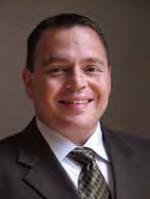
• Each Member of the Jaguar Marching Band receives a scholarship

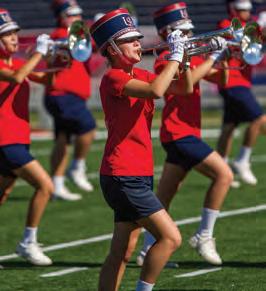
• Full-Band travel opportunities to away games and exhibitions
• Matching university-provided wind instruments
• New custom drumline for 2014 Season
• One Pre-Game Show and Three Half-Time Themes each season
• Fastest growing university in the state and region
• NO fees and NO fundraising
WIND
COLOR GUARD
November 8, 2014
February 14, 2015
June 27, 2015
DRUMLINE July 9-11, 2015
JAGUAR MARCHING BAND
UNIvERSITy OF SOUTH ALABAMA
Laidlaw Performing Arts Center
5751 USA Drive South, Room 1072
Mobile, AL 36688
251-460-6136
usajmb@southalabama.edu
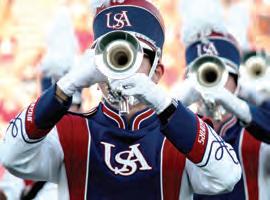
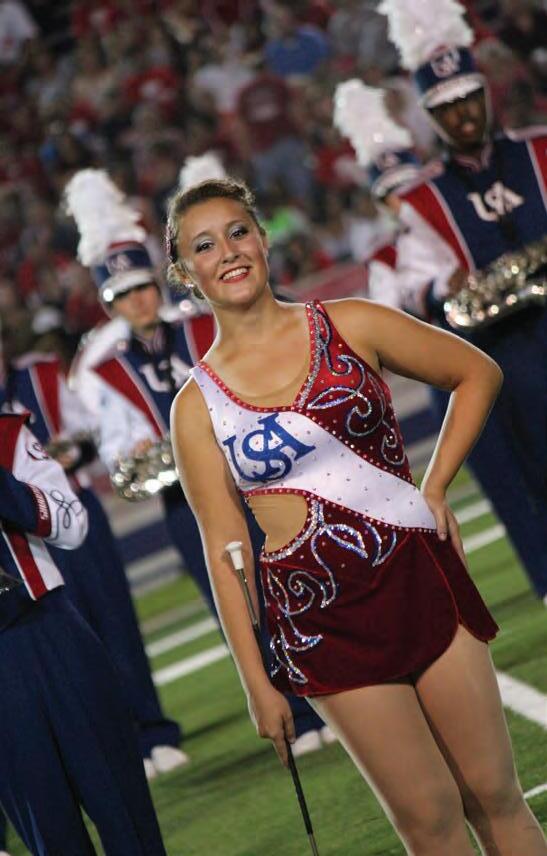





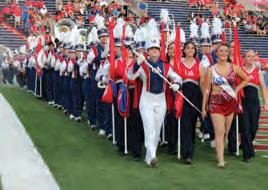
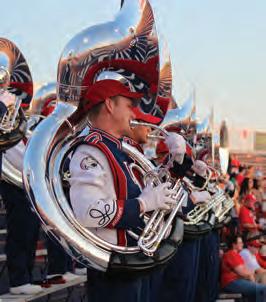

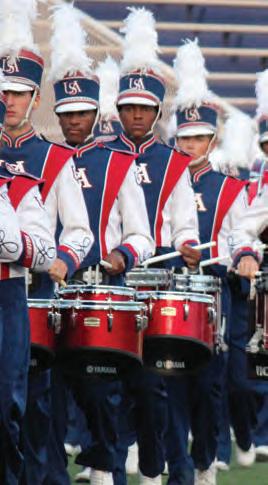
March 14, 2015
April 4, 2015
For more Information about AUDITION DATES visit www.jaguarmarchingband.org or call 251-460-6136
www.jaguarmarchingband.org
facebook.com/jaguarmarchingband twitter.com/usajmb
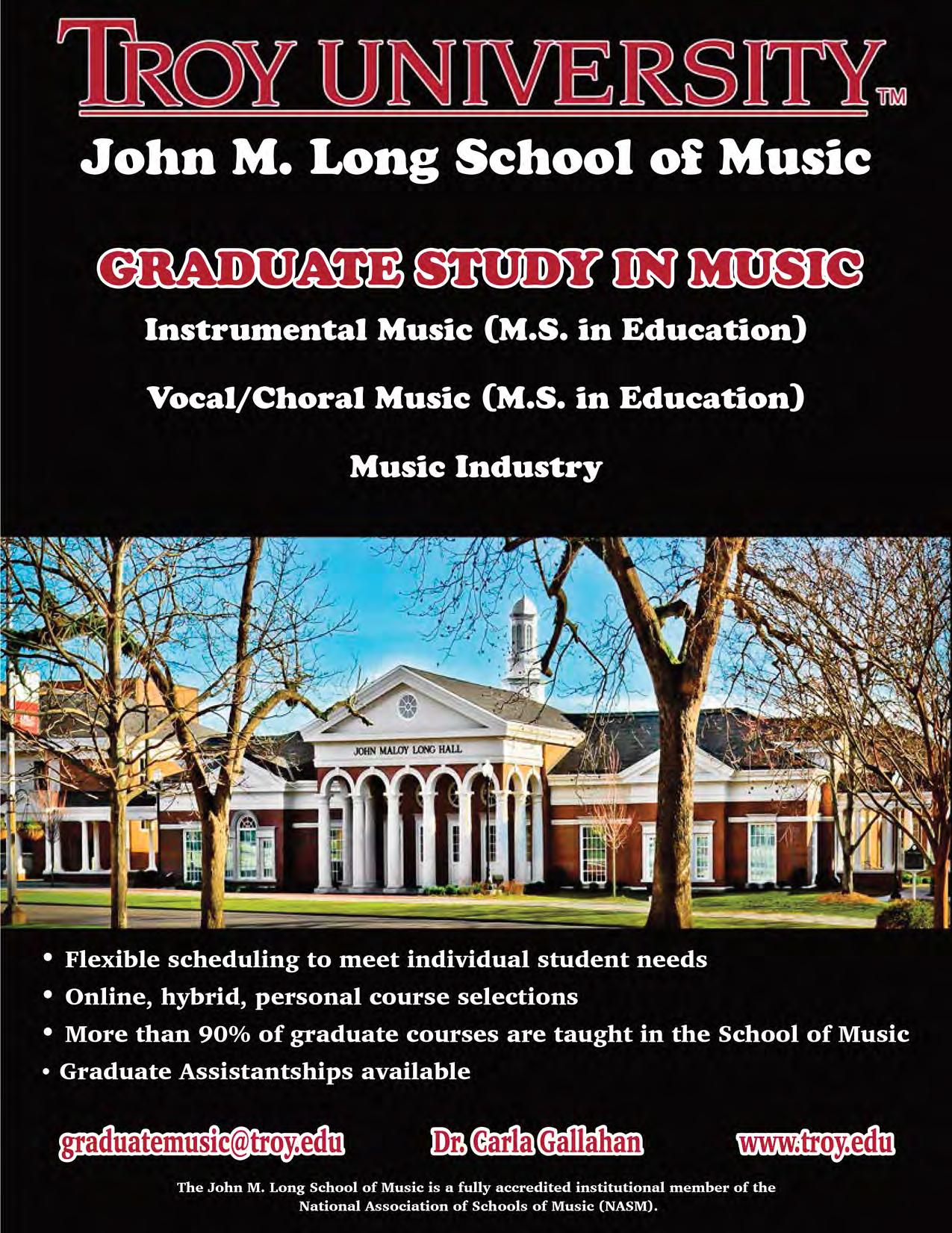

AMEA recently launched an Industry/Institutional membership drive and would like to express appreciation to the following partners who have joined AMEA in our efforts to promote music education in Alabama. Please support these industry/institutional members who support you as music educators!
Andy’s Music
1412 Hillcrest Rd. Mobile, AL 36695 www.andysmusic.com


AWB Apparel

206 Potomac Ct. Woodstock, GA 30188 www.awbapparel.com
eMedia Corporation 664 NE Northlake Way Seattle, WA 98105 www.emediamusic.com

Group Travel Network, Inc.


410 N. Dillard St.- Suite 104 Winter Garden, FL 34787 www.grouptravelnetwork.com
Marchmaster, Inc.

P.O. Box 73379 Newnan, GA 30271 www.marchmaster.com
Musical Destinations, Inc.

P.O. Box 771060 Winter Garden, FL 34777 www.musicaldestinations.com
Simply Sheets Fundraising
3065 Heatherbrook Trace Canton, GA 30114 www.simplysheetsfundraising.com

Southern Performances

16121 Mansion St. Foley, AL 36535 www.southernperformances.com
Superior Travel and Tour 1270 Coronado Terrace Deltona, FL 32725 www.superiortravelandtour.com
Troy University
John M. Long School of Music
Troy, AL 36082 www.music.troy.edu
UNA Department of Music & Theatre

UNA Box 5040
Florence, AL 35632-0001
www.una.edu/music-theatre
Art’s Music Shop, Inc. 3030 East Blvd. Montgomery, AL 36116 www.artsmusicshop.com
Bailey Brothers Music Company

4673 Highway 280 East Birmingham, AL 35242 www.baileybrothers.com
Gadsden Music Company

P.O. Box 132 Gadsden, AL 35902 www.gadsdenmusic.com
J W Pepper & Son 9053 Riverside Parkway Lithia Springs, GA 30122 www.jwpepper.com

Mouchette Enterprises, Inc. P.O. Box 394 Northport, AL 35426

QuaverMusic.com

1706 Grand Avenue Nashville, TN 37212 www.quavermusic.com
Springdale Travel/Student Tours


958 Montlimar Drive Mobile, AL 36609 www.springdaletravel.com
Southern Star Music Festival and Southern Star Festival of Champions 635 Sunset Dr. Norcross, GA 30071 www.starmusicfestivals.com
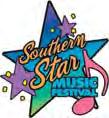
Thomas Tours, Inc. 2405 12th Ave. South Nashville, TN 37204 www.thomastoursinc.com

The University of Alabama Bands

211 Moody Music Building Tuscaloosa, AL 35487 www.bands.ua.edu
University of South Alabama
LPAC 1072, 5751 USA Drive, S Mobile, AL 36688 www.southalabama.edu/music
Masters in this hall, arr. Ian Loeppky (2014) SSAATTB, a cappella
UNC Jazz Press
http://www.uncjazzpress.com/productp/vj2631.htm
Tune: Marin Marais
Text: Christmas, William Morris
Arranged by Professor of Music at the University of North Alabama and Director of Choirs, Dr. Ian Loeppky, this jazzy little number is bound to liven up any holiday program. Dr. Loeppky conducts many choirs at UNA, but he also supervises the UNA vocal jazz ensemble. This piece, which explores two verses and chorus of Morris’s text, was written for them.
Although technically challenging, it is well within the scope of any collegiate ensemble, and could be performed by an advanced high school group. Set in a lively 5/4, the piece begins with the lower three voice parts laying the harmonic foundation using sung syllables. The sopranos soon join in singing the melody, again in a fast 5/4. During the chorus, the texture thickens and the women are split into four-parts, sopranos divided on the melody, and the altos continuing with their ostinato-type accompaniment. Lovely to see the altos take over the melody for the second verse while the men split into threeparts. Loeppky then thickens the texture, layer upon layer, adding the S2s to the melody line (albeit harmonizing down a 3rd), and then finally adding the S1 as descant. By the time we reach the final chorus, all parts are moving homophonically at an excited forte. He then surprises us with a subito piano and a change to 6/8 meter accentuating the text “cast a down the” before the denouement on “cast a down the proud”. He ends the piece, back again, in 5/4, but adds a little scat-style singing to the women’s parts to create a jazzy, but soft, finale to the piece.
It is obvious that Loeppky enjoyed writing this for his students, and his students enjoyed singing it. Loeppky is no stranger to composing and arranging, but he seems to have found his niche arranging for his very accomplished jazz ensemble. He recently finished a jazzy arrangement of Scarborough Fair, which will likely also be picked up and published by UNC Jazz Press.
Erin Colwitz, D.M.A, Associate Professor of Music/Director of Musc, UAHSATB, a cappella Boosey and Hawkes
Text: Sacred, Robert Bridges
This 2-minute work for a cappella chorus is the third movement from a cycle written by Finzi entitled, Seven Poems by Robert Bridges, Op. 17. You may be asking yourself, who is Gerald Finzi? That’s a great question! He is one of the more underappreciated English composers, competing with the likes of Charles Stanford, Hubert Parry, Gustav Holst, R. Vaughan Williams and Edward Elgar. His mother brought him to Stanford and asked that he take lessons with the famous composer; ironically, Stanford told Finzi’s mother that he did not have any talent and “not to waste her time”. As a result, he was largely self-taught and slow in getting a start as a composer. He died rather early, resultingly, his compositional output is rather small, comparatively. Finzi wrote mostly for the solo voice and chorus, but is also known for his organ works. Despite this, his Seven Poems by Robert Bridges has caught the attention of choral conductors in the United States because of the texts and fine craftsmanship.
Starting with a forte unison, the texture then becomes homophonic in nature, expanding the harmonies over the four parts. Finzi’s style of harmony is traditional in that one can analyze the harmonic structure fairly easily; the most difficult part for any chorus is the occasionally difficult passage due to voice leading. The tenors are often the voice part struggling to discern just where their line is going. With Finzi, it always resolves, but it can be a tad disjunct along the way. Although slightly difficult, it is not so difficult that an advanced high school ensemble could not learn this music. Finzi has a relaxed and natural way of setting text – almost always with syllabic and agogic stress in mind as to make it as intuitive as possible. After the strong opening, Finzi utilizes short bursts of polyphony to thicken the texture. By doing so, he brings forth the meaning of the text; the use of polyphony often happens during interesting or important sections of the poetry to which he would like to draw attention. Likewise, he gets the same effect during unison sections
of the piece, particularly during the “B section”. He recaps the “A section” using the same musical material as the beginning, also in unison, but with a slight meter change. Finzi employs a forte ending, splitting the women into three-parts and slowing down the text and the harmonic rhythm for a big finish.
The entire cycle is worth performing, but by itself, My Spirit Sang All Day, can serve as a nice “opener” for any concert. Because of the unison sections and abundan use of homophony, this is a no-brainer for college choirs. However, an advanced high school group can benefit greatly from Finzi’s writing – they WILL sound good. And from a teaching standpoint, there is much here to learn.
Tanzen und Springen, Hans Leo Hassler (1564-1612)
Edited and Arranged by Patrick M. Liebergen
English Text by Patrick Liebergen
SSA, Optional Piano, Hand Drum/Finger Cymbals
Alfred Publishing Co., Inc.
Text: secular Renaissance, German
This arrangement of a Renaissance dance by Patrick Liebergen is very accessible. Written for SSA with optional piano and percussion, it is a good way to incorporate some early music literature intothe women’s repertoire in a fun, easy way.
Hans Leo Hassler was a German composer and organist, working primarily in Northern Germany during the late Renaissance and early Baroque periods. He was one of the first to bring the Italian madrigal style “across the alps” to Germany. Although primarily a Protestant religious music composer, he wrote many secular works incorporating the Italian Renaissance dance styles into his canzonets and madrigals.
Tanzen und Springen (German for “dancing and springing”) would have most likely been used for entertainment and performed at a dinner party and a dance by the participants—not professionals— themselves. The texture would have varied, depending on the instruments available. The Renaissance period allowed for great flexibility in performing forces; this piece
might have been performed at one occasion as a purely instrumental piece, and at another combining instrumental and vocal forces. Therefore, the form is meant to be flexible and each section easily repeated.
The piece itself is homophonic, allowing the text to take center stage. I recommend the piece be sung in German, but the English translation, also done by Liebergen, is a good one and is also an option. The quick, light tempo and triple meter gives it a happy, pleasant feel and can fit nicely alongside other Renaissance madrigals. Adding a recorder consort to this piece would also be effective. The different recorders could simply double each vocal line, adding some nice texture. Liebergen has also added via his edition some fairly simple dynamic markings that give the repeats some life. Performing this with a strong feeling of “1” is highly encouraged.
This particular arrangement by Patrick Liebergen is perfect for any advanced middle school or high school women’s chorus setting. Members of the ensemble
can easily play the percussion parts (included in the arrangement) while singing. There are many cross-disciplinary lessons to be taught here; one might involve the history teacher in a lesson on Renaissance life, while incorporating the dance styles, dress, food and performance practice of the period. One could also ask the German teacher to help with pronunciation and include a short German lesson on the country, its traditions and the composer himself. As far as programming, this piece is a solid opener, but because of its short length, it is recommended that it be programmed alongside other Renaissance-style madrigals and canzonets.
Erin Colwitz received her Bachelors of Music from the University of Minnesota in 1998 in education. She taught in the Centennial/Lino Lakes School District for four years while also singing professionally with the Minneapolis-based Grammynominated Dale Warland Singers. Dr. Colwitz later completed the Master of Music (2004) and Doctor of Musical Arts (2007)
degrees from the University of Southern California in choral music with minors in musicology, sacred music and music education.
Dr. Colwitz is Associate Professor of Music and Director of Choirs at UAH. She conducts the Chamber Choir, Concert Choir, teaches beginning and advanced conducting, music history, choral methods courses, supervises student teachers and is also teaching a new HISTORY OF THE BEATLES class this semester. Dr. Colwitz is an active adjudicator and clinician around the Southeast. She most recently traveled to Thailand and Costa Rica to work with collegiate and high school aged choirs and orchestras. Dr. Colwitz is founder and advisor to the ACDA student chapter at UAH and has served on the Alabama ACDA board as the Repertoire and Standards Chair for Community Choirs. She is also a national board member and the Alabama representative for the National Collegiate Choral Organization.
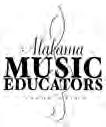
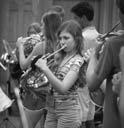
It is my pleasure and honor to join AMEA and to serve on the President’s Cabinet as the Advanced Placement Theory Chairperson. As this is a new position, I will be working diligently to better understand the needs of our high school students who participate in AP Theory courses, and will also encourage those who may be considering taking part in the curriculum.
While it is no surprise that entering a collegiate musical environment is the hope and goal of many of our students; it is also apparent that joining a community of musical peers, at such a critical point of learning and development, can be very daunting and oftentimes overwhelming. While most students enter a collegiate musical environment with a great deal of experience in enjoying the performance of music, it is also true that many students enter with insufficient training in the language of music. My experience suggests that this lack of fluency in the fundamentals of our musical language does not only contribute to the stress of the beginning collegiate musician, but it also creates disheartening stumbling blocks in the student’s academic growth.
In her recent article, “Music Literacy and Language Literacy: Parallel Connections,” (Cooper 2014)Shelly Cooper very aptly describes the correlation between both the musical and the linguistic languages. Just as we do not teach our youngest students to identify subjects and predicates on the first day of any elementary language course, having no prior knowledge of the letters of the alphabet,we should not expect our musical students to engage in collegiatelevel theory courses, without the equivalent preparation.
In my new position, one of my goals is to help teachers find the most effective and successful strategies for preparing students, particularly through the vehicle of the AP Theory course, but certainly through whatever other means are necessary and
available. AMEA President, Dr. Carl Hancock, has suggested creating a summer immersion camp for students (and teachers), generating lists of resources, and offering presentations on this topic at future conferences.I believe these suggestions are fantastic and will be working over the course of the year to bring them into reality. Similarly, as he has suggested, I will work to coordinate teachers, forming an advisory committee, which will be charged with the sharing of pertinent resources and developingin-service opportunities.
Currently, 308 high schools in the state of Alabama offer AP courses; however, there are only 33 schools in the state that offer AP Music Theory.1 I sincerely hope to see this number increase dramatically in the coming years, and am seeking your support for this effort and your willingness to be a part of this positive change. Successful completion of the course will provide the necessary foundation for students aiming for musical studies at the collegiate level,and will help to ensure a successful outcome.

I will be eager to work with all of you who are hoping to make this offering a reality in your schools. I am also more than happy to
by Amir Zaherijoin those of you who are already providing this curriculum and wish to learn of additional resources. If you are interested in being a part of this initiative in any way, please do not hesitate to be in touch with me. There is much good work to be done, and I am anxious to be a part of the process. Over the course of the year, I sincerely hope to hear from many of you and I also look forward to any opportunity to visit with you and discuss the ways in which I may be helpful in assisting your students’ efforts to reach their goals.
Works Cited
Cooper, Shelly. “Music Literacy and Language Literacy: Parallel Connections.” ala breve, February/March 2015: 52-53.

1 Data provided by apcoursecredit.epiconline.org.
Dr. Amir Zaheri
Instructor of Music Composition and Theory



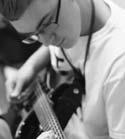
The University of Alabama
E-mail: amir.zaheri@ua.edu

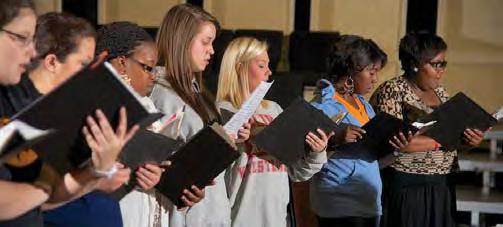
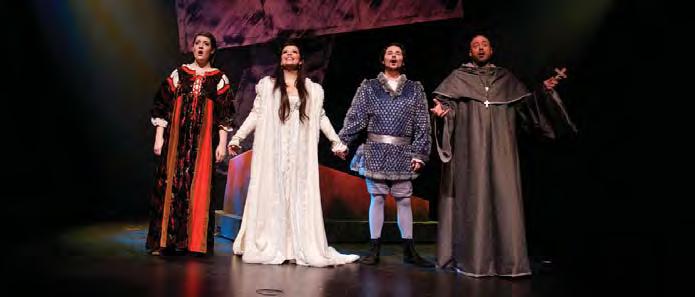

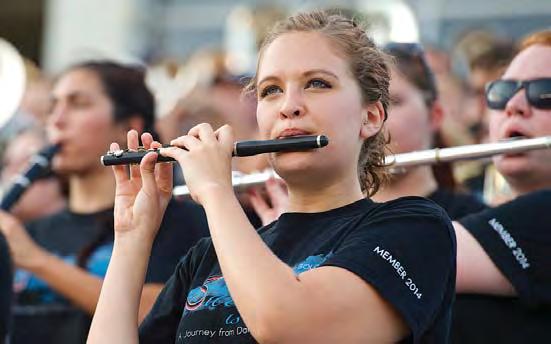
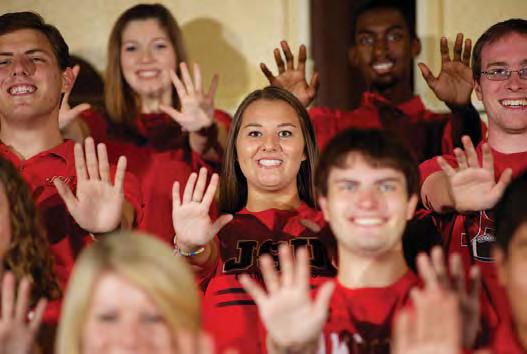
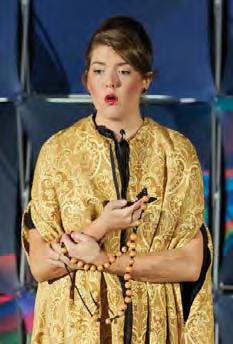
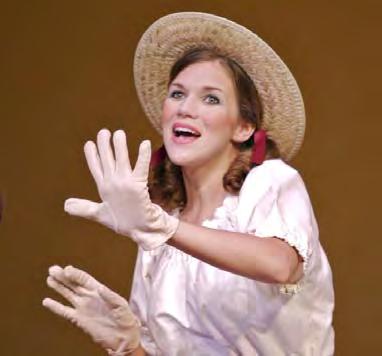
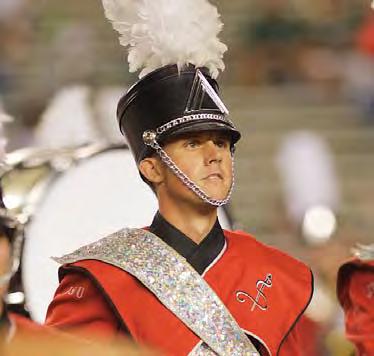




















The Alabama Music Educators Association is proud to recognize those AMEA members having 25 or more years of continuous membership in NAfME. This year, each person attaining 25 years and those reaching increments of five years beyond that will be honored.
The strength of any organization can be demonstrated by the dedication and leadership displayed by its members. The greatest learning opportunities come to those members who become involved with the organization and offer to participate in leadership responsibilities.
Numbers following the names below represent the number of years of continuing membership - not the number of years of teaching. Many of these educators are retired from active teaching, but continue to make contributions to music education and to AMEA in other ways. We congratulate this group of leaders and thank them for their service on behalf of music education.
Years of Continuing Membership
Edward Cleino - 70 years
John M. Long - 65 years
Lacey Powell - 60 years
Anne Witt - 50 years
Wanda Thompson - 45 years
Pat Blackwell - 40 years
Jerry Toole - 40 years
William Brindza - 35 years
Carl Kauffman - 35 years
Alvin McKinney - 35 years
Michael Stough - 35 years
David Brewer - 30 years
Rick Coggin - 30 years
Thomas Holland - 30 years
Deborah Petipas - 30 years
Pam Smith - 30 years
Randell Wallace - 30 years
David Bearden - 25 years
Linda Byrd - 25 years
John Cooper - 25 years
David Curren - 25 years
John Mark Foster - 25 years
Thomas Francis - 25 years
Joseph Harbison - 25 years
Martha Harris - 25 years
Detrick Hodges - 25 years
Clarence Janes - 25 years
Rusty Logan - 25 years
Jane Powell - 25 years
Regina Raney - 25 years
